NanoCenter Staff & Faculty Members
NanoCenter Faculty Members
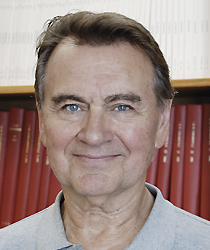 Mikhail Anisimov
Chemical and Biomolecular Engineering
Distinguished University Professor
Mesoscopic and nanoscale thermodynamics, critical phenomena, and phase transitions in soft matter.
Department page
| Group site
Mikhail Anisimov
Chemical and Biomolecular Engineering
Distinguished University Professor
Mesoscopic and nanoscale thermodynamics, critical phenomena, and phase transitions in soft matter.
Department page
| Group site
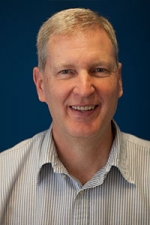 Steven Anlage
Physics
Professor
The use of near-field microwave microscopes to investigate the nanoscale fundamental physics of correlated electron systems
Steven Anlage
Physics
Professor
The use of near-field microwave microscopes to investigate the nanoscale fundamental physics of correlated electron systems
Study of correlated-electron materials with nm-resolution near-field and far-field microwave microscopes
Investigation of fundamental questions in quantum chaos through electromagnetic analog experiments
Experiments on time-reversed electromagnetics in wave chaotic systems
Investigation of superconducting metamaterials with novel electrodynamic properties
Department page
| Group site
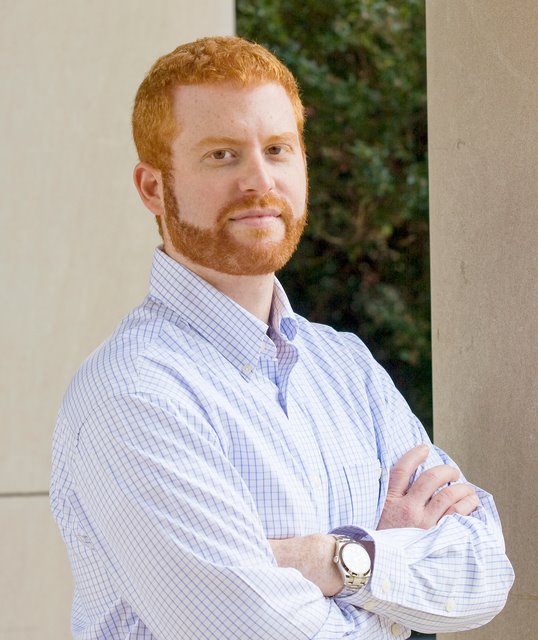 Ian Appelbaum
Physics
Professor
Semiconductor device physics:
Spin-polarized electron injection, transport, and detection
Polarized radiative transitions within the donor spectrum and THz devices
Electron spin resonance
Experimental search for bound Majorana fermions
Department page
| Group site
Ian Appelbaum
Physics
Professor
Semiconductor device physics:
Spin-polarized electron injection, transport, and detection
Polarized radiative transitions within the donor spectrum and THz devices
Electron spin resonance
Experimental search for bound Majorana fermions
Department page
| Group site
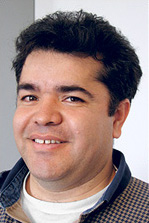 Helim Aranda-Espinoza
Fischell Dept. of Bioengineering
Associate Professor
Application of the theoretical and experimental machinery of physics and engineering to obtain a quantitative understanding of specific problems inspired by biological systems. Specifically, our long term aims are to develop a fundamental understanding on cell mechanics and the mechanisms by which motile cells adhere, spread, and crawl over adhesive substrata with a primary focus on neurons and cells involved in cardiovascular disease.
Department page
| Group site
Helim Aranda-Espinoza
Fischell Dept. of Bioengineering
Associate Professor
Application of the theoretical and experimental machinery of physics and engineering to obtain a quantitative understanding of specific problems inspired by biological systems. Specifically, our long term aims are to develop a fundamental understanding on cell mechanics and the mechanisms by which motile cells adhere, spread, and crawl over adhesive substrata with a primary focus on neurons and cells involved in cardiovascular disease.
Department page
| Group site
 William Bentley
Fischell Dept. of Bioengineering
Director, Robert E. Fischell Institute for Biomedical Devices; Robert E. Fischell Distinguished Professor
Biomolecular and metabolic engineering, cell-to-cell communication, heterologous protein expression, device/bio interfaces.
Department page
| Group site
William Bentley
Fischell Dept. of Bioengineering
Director, Robert E. Fischell Institute for Biomedical Devices; Robert E. Fischell Distinguished Professor
Biomolecular and metabolic engineering, cell-to-cell communication, heterologous protein expression, device/bio interfaces.
Department page
| Group site
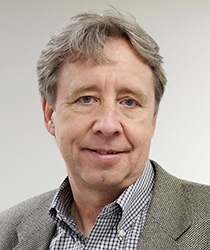 Robert Briber
Materials Science and Engineering
Associate Dean for Research, A. James Clark School of Engineering
Thermodynamics of Complex Polymer Systems, Structural Solutions of Novel Molecules, Nanoscale materials and structure, X-ray and neutron scattering.
Department page
| Group site
Robert Briber
Materials Science and Engineering
Associate Dean for Research, A. James Clark School of Engineering
Thermodynamics of Complex Polymer Systems, Structural Solutions of Novel Molecules, Nanoscale materials and structure, X-ray and neutron scattering.
Department page
| Group site
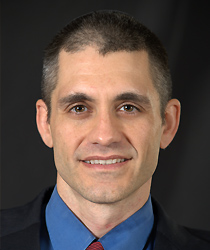 Hugh Bruck
Mechanical Engineering
Associate Dean for Faculty Affairs; Professor
New techniques for rapid manufacturing and characterization of functionally graded, multifunctional, biologically-inspired, and nanocomposite materials.
Hugh Bruck
Mechanical Engineering
Associate Dean for Faculty Affairs; Professor
New techniques for rapid manufacturing and characterization of functionally graded, multifunctional, biologically-inspired, and nanocomposite materials.
Controlled formation of functionally graded and transversely modulated heterophase structures in thin films through diffusion and epitaxial principles.
Fundamental mechanical characterization and modeling of static and dynamic failure mechanisms in composite materials.
Development of new nanomechanical and multiscale characterization methods for composite materials and thin films.
New techniques for manufacturing Point-of-Care microfluidic devices using laminated object manufacturing and laser micromachining.
New biosensing principles for Point-of-Care microfluidic devices using optical methods and nanocomposite materials.
Development of multifunctional skins and compliant structures for robotics.
Department page
| Group site
 Kyu Yong Choi
Chemical and Biomolecular Engineering
Professor
Modeling and design of polymeric nanomaterials including miniemulsion, precipitation polymerization, template synthesis technique; development of novel applications of nanoparticle-containing materials in coatings and display technology
Department page
| Group site
Kyu Yong Choi
Chemical and Biomolecular Engineering
Professor
Modeling and design of polymeric nanomaterials including miniemulsion, precipitation polymerization, template synthesis technique; development of novel applications of nanoparticle-containing materials in coatings and display technology
Department page
| Group site
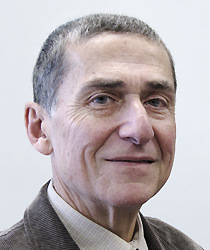 Aris Christou
Materials Science and Engineering
Professor
Radiation effects in microelectronics, radiation hard design methodologies and
the physics of failure of compound semiconductors in space applications.
Research in materials degradation, radiation induced defects in metals,
corrosion effects and high pressure induced transformations in steels and iron alloys.
Department page
| Group site
Aris Christou
Materials Science and Engineering
Professor
Radiation effects in microelectronics, radiation hard design methodologies and
the physics of failure of compound semiconductors in space applications.
Research in materials degradation, radiation induced defects in metals,
corrosion effects and high pressure induced transformations in steels and iron alloys.
Department page
| Group site
 John Cumings
Materials Science and Engineering
Associate Professor
The primary goal of my research is to advance the current understanding of the dynamic properties of nanoscale systems. The future of many fields of the physical and biological sciences lies in nanotechnology, and as the size of functional devices progresses ever smaller, there will inevitably be problems that can only be addressed by direct real-time observations. A number of research groups are focusing on using scanned probe techniques, such as scanning tunneling microscopy (STM) and atomic-force microscopy (AFM), to explore dynamic properties at the nanoscale, but these slow imaging techniques are poor at capturing these effects. My research goes beyond this approach by using real-time imaging techniques, such as transmission electron microscopy (TEM) to explore fundamental physics on small length scales.
Department page
| Group site
John Cumings
Materials Science and Engineering
Associate Professor
The primary goal of my research is to advance the current understanding of the dynamic properties of nanoscale systems. The future of many fields of the physical and biological sciences lies in nanotechnology, and as the size of functional devices progresses ever smaller, there will inevitably be problems that can only be addressed by direct real-time observations. A number of research groups are focusing on using scanned probe techniques, such as scanning tunneling microscopy (STM) and atomic-force microscopy (AFM), to explore dynamic properties at the nanoscale, but these slow imaging techniques are poor at capturing these effects. My research goes beyond this approach by using real-time imaging techniques, such as transmission electron microscopy (TEM) to explore fundamental physics on small length scales.
Department page
| Group site
 Mario Dagenais
Electrical and Computer Engineering
Professor
Professor Dagenais' research interests are in Si3N4/SiO2 integrated nanophotonic devices on Si, complex waveguide Bragg gratings and genetic algorithm, quantum information and integration, GaN light sources, and quantum dot GaAs/AlGaAs, CIGS and perovskite photovoltaics. He also has interest in high power semiconductor laser sources, semiconductor optical amplifiers (SOAs), superluminescent LEDs, detectors, modulators, and in the integration of these components.
Department page
| Group site
Mario Dagenais
Electrical and Computer Engineering
Professor
Professor Dagenais' research interests are in Si3N4/SiO2 integrated nanophotonic devices on Si, complex waveguide Bragg gratings and genetic algorithm, quantum information and integration, GaN light sources, and quantum dot GaAs/AlGaAs, CIGS and perovskite photovoltaics. He also has interest in high power semiconductor laser sources, semiconductor optical amplifiers (SOAs), superluminescent LEDs, detectors, modulators, and in the integration of these components.
Department page
| Group site
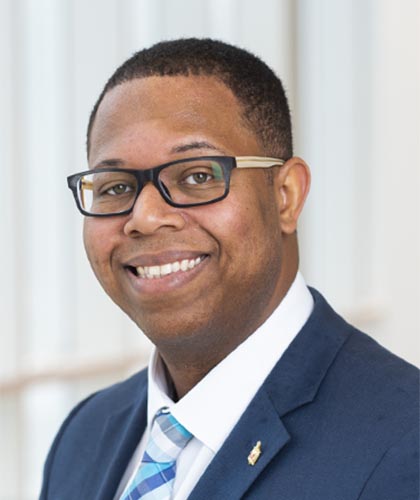 Kevin Daniels
Accounting
His current research interest include the growth of various metallic, semiconducting and insulating two-dimensional materials, particularly transition metal oxides and dichalcogenides, for environmental and biological sensors, batteries, and fuel cells. He has co-authored over 30 publications in the fields of material growth, electrochemistry and plasmonics and has given over 20 conference presentations.
Department page
| Group site
Kevin Daniels
Accounting
His current research interest include the growth of various metallic, semiconducting and insulating two-dimensional materials, particularly transition metal oxides and dichalcogenides, for environmental and biological sensors, batteries, and fuel cells. He has co-authored over 30 publications in the fields of material growth, electrochemistry and plasmonics and has given over 20 conference presentations.
Department page
| Group site
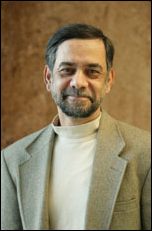 Abhijit Dasgupta
Mechanical Engineering
Professor
Mechanics of electronic packaging materials and "smart" composite materials Research focused on nanomechanics, micromechanics, damage mechanics and computational mechanics. Nano-mechanics, nano-manufacturing and nano-product development.
Department page
| Group site
Abhijit Dasgupta
Mechanical Engineering
Professor
Mechanics of electronic packaging materials and "smart" composite materials Research focused on nanomechanics, micromechanics, damage mechanics and computational mechanics. Nano-mechanics, nano-manufacturing and nano-product development.
Department page
| Group site
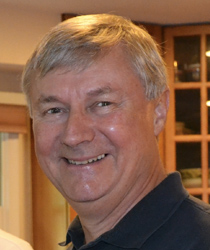 Christopher Davis
Electrical and Computer Engineering
Minta Martin Professor of Engineering
Free space optical and directional RF communication systems, atmospheric turbulence, advanced surveillance systems, plasmonics, chemical and biological sensors, interferometry, optical systems, bioelectromagnetics, RF dosimetry. Currently active research includes optical and RF directional wireless, real-time advanced surveillance systems with "event" detection, the optical properties of nanostructures where surface plasmons can be excited, laser interferometry, dielectrometry, fiber sensors and biosensors, magnetooptics, optical trace detection, atmospheric turbulence, optical communication systems and devices, and studies of the biological effects of non-ionizingradiation. His past research has covered gas lasers, photon counting, chemical lasers, molecular relaxation processes, diode-pumped solid-state lasers, laser noise and instabilities, injection locking of broad area laser diodes, nonlinear imaging of ferroelectric and ferromagnetic materials, and near-field scanning optical microscopy.
Department page
| Group site
Christopher Davis
Electrical and Computer Engineering
Minta Martin Professor of Engineering
Free space optical and directional RF communication systems, atmospheric turbulence, advanced surveillance systems, plasmonics, chemical and biological sensors, interferometry, optical systems, bioelectromagnetics, RF dosimetry. Currently active research includes optical and RF directional wireless, real-time advanced surveillance systems with "event" detection, the optical properties of nanostructures where surface plasmons can be excited, laser interferometry, dielectrometry, fiber sensors and biosensors, magnetooptics, optical trace detection, atmospheric turbulence, optical communication systems and devices, and studies of the biological effects of non-ionizingradiation. His past research has covered gas lasers, photon counting, chemical lasers, molecular relaxation processes, diode-pumped solid-state lasers, laser noise and instabilities, injection locking of broad area laser diodes, nonlinear imaging of ferroelectric and ferromagnetic materials, and near-field scanning optical microscopy.
Department page
| Group site
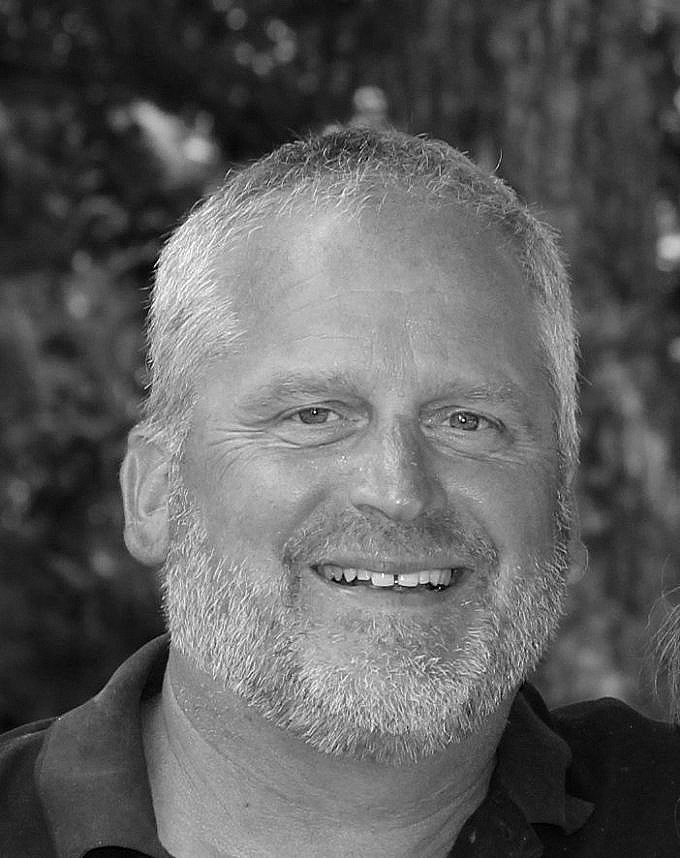 Jeffery Davis
Chemistry and Biochemistry
Professor
Organic Chemistry, Bioorganic Chemistry, Self-Assembly, Molecular Recognition, Chirality.
Jeffery Davis
Chemistry and Biochemistry
Professor
Organic Chemistry, Bioorganic Chemistry, Self-Assembly, Molecular Recognition, Chirality.
Supramolecular chemistry, molecular self-assembly, functional nanostructures, transmembrane ion transport.
Supramolecular Hydrogels from natural products have promise in drug delivery and tissue engineering. We have found that potassium borate templates self-assembly of guanosine into a supramolecular hydrogel. figure-1_davis-2This guanosine-borate (GB) hydrogel is stable in salt water and absorbs cationic dyes and antiviral drugs. We are working to determine the mechanism of formation and the range of applications for these hydrogels.
Department page
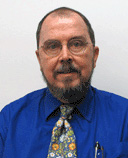 Philip DeShong
Chemistry and Biochemistry
Professor
Synthesis of nanomaterials with novel optical properties; synthesis and characterizaton of functionalized nanomaterials for applications in drug delivery, diagnostics and vaccine development; total synthesis of heterocyclic natural products, development of methodology for organic synthesis, mechanistic organometallic chemistry, synthesis of complex oligosaccharides and glycoprotein derivatives, chemistry of hypervalent silicon derivatives.
Department page
Philip DeShong
Chemistry and Biochemistry
Professor
Synthesis of nanomaterials with novel optical properties; synthesis and characterizaton of functionalized nanomaterials for applications in drug delivery, diagnostics and vaccine development; total synthesis of heterocyclic natural products, development of methodology for organic synthesis, mechanistic organometallic chemistry, synthesis of complex oligosaccharides and glycoprotein derivatives, chemistry of hypervalent silicon derivatives.
Department page
 Don DeVoe
Mechanical Engineering
Professor & Associate Chair
MEMS; Microfluidic systems; Disposable technologies for diagnostics and bioanalysis; Microtechnology for synthetic biology; Nanomedicine development
Department page
| Group site
Don DeVoe
Mechanical Engineering
Professor & Associate Chair
MEMS; Microfluidic systems; Disposable technologies for diagnostics and bioanalysis; Microtechnology for synthetic biology; Nanomedicine development
Department page
| Group site
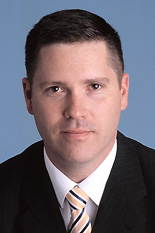 John Fisher
Fischell Dept. of Bioengineering
Fischell Family Distinguished Professor & Department Chair
Biomedical engineering; synthesis of novel hydrolytically degradable; implantable polymers; study and use of biomaterials for the delivery of therapeutics; scaffolds for orthopaedic tissue engineering applications; interaction of biomaterials and tissues
Department page
| Group site
John Fisher
Fischell Dept. of Bioengineering
Fischell Family Distinguished Professor & Department Chair
Biomedical engineering; synthesis of novel hydrolytically degradable; implantable polymers; study and use of biomaterials for the delivery of therapeutics; scaffolds for orthopaedic tissue engineering applications; interaction of biomaterials and tissues
Department page
| Group site
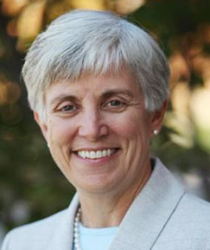 Alison Flatau
Aerospace Engineering
Professor
Active flow control, sensor and actuator design, magnetostrictive materials, material characterization, smart fabrics and textiles, vibrations and acoustics
Department page
| Group site
Alison Flatau
Aerospace Engineering
Professor
Active flow control, sensor and actuator design, magnetostrictive materials, material characterization, smart fabrics and textiles, vibrations and acoustics
Department page
| Group site
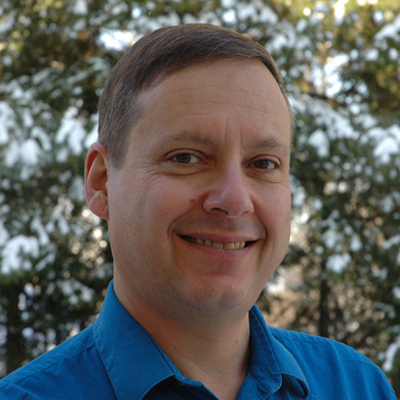 John Fourkas
Chemistry and Biochemistry
Millard Alexander Professor
Ultrafast nonlinear optical spectroscopy of liquids; dynamics of nanoconfined liquids; nonlinear optical microscopy; nontraditional approaches to micro- and nanofabrication; dynamics of single molecules and single nanoparticles; nonlinear absorption; nonlinear plasmonics; cellular biophysics.
Department page
| Group site
John Fourkas
Chemistry and Biochemistry
Millard Alexander Professor
Ultrafast nonlinear optical spectroscopy of liquids; dynamics of nanoconfined liquids; nonlinear optical microscopy; nontraditional approaches to micro- and nanofabrication; dynamics of single molecules and single nanoparticles; nonlinear absorption; nonlinear plasmonics; cellular biophysics.
Department page
| Group site
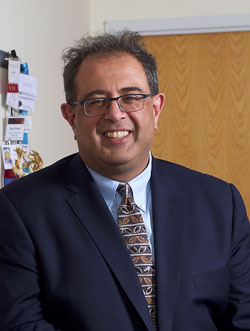 Reza Ghodssi
Electrical and Computer Engineering
Herbert Rabin Distinguished Chair in Engineering
Reza Ghodssi
Electrical and Computer Engineering
Herbert Rabin Distinguished Chair in Engineering
Director, Institute for Systems Research
Design and development of microfabrication technologies and processes in micro/nano/bio devices and systems for chemical and biological sensing, small- scale energy conversion and harvesting with a strong emphasis toward healthcare applications.
Department page
| Group site
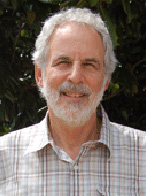 Richard Greene
Physics
Professor & Director, CSR
Cuprate high-temperature superconductors
Richard Greene
Physics
Professor & Director, CSR
Cuprate high-temperature superconductors
Iron-pnictide and related superconductors
Search for new and practical superconductors
Topological Insulators
Department page
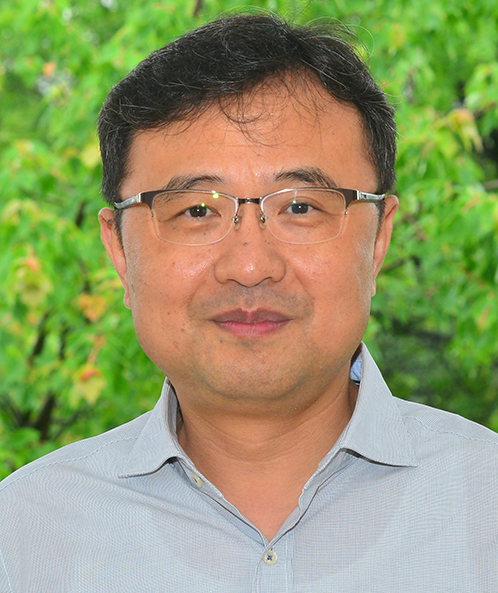 Bongtae Han
Mechanical Engineering
Professor
Mechanical design of photonics and microelectronics packaging for optimum reliability; Physics of failure (PoF) of advanced semiconductor packaging; Reliability assessment and life assessment of automotive electronics; Mechanical characterization of electronic packaging materials; Experimental micro- and nano-mechanics (optical methods and methodologies)
Department page
| Group site
Bongtae Han
Mechanical Engineering
Professor
Mechanical design of photonics and microelectronics packaging for optimum reliability; Physics of failure (PoF) of advanced semiconductor packaging; Reliability assessment and life assessment of automotive electronics; Mechanical characterization of electronic packaging materials; Experimental micro- and nano-mechanics (optical methods and methodologies)
Department page
| Group site
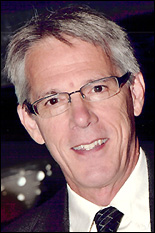 Keith Herold
Fischell Dept. of Bioengineering
Associate Professor
BioMEMS, microfluidic systems for bioanalytical assays, heat and mass transfer in bioengineering.
Department page
| Group site
Keith Herold
Fischell Dept. of Bioengineering
Associate Professor
BioMEMS, microfluidic systems for bioanalytical assays, heat and mass transfer in bioengineering.
Department page
| Group site
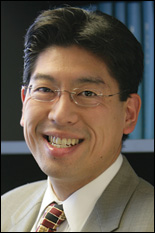 Adam Hsieh
Fischell Dept. of Bioengineering
Associate Research Professor
For many tissues in the musculoskeletal system, maintenance and the development of disorders are regulated by mechanical stresses. We are focused on understanding the role of a cell's physical environment on its biological function, from the macro-scale to the nano-scale. In terms of the nano-scale, we are currently examining the influences of collagen fiber orientation and stiffness on intervertebral disc cell morphology and gene expression. Orthopaedic biomechanics; soft tissue mechanobiology; mechanisms of intervertebral disc degeneration; mechanobiologic strategies for developing spatially-complex tissue engineered constructs.
Department page
| Group site
Adam Hsieh
Fischell Dept. of Bioengineering
Associate Research Professor
For many tissues in the musculoskeletal system, maintenance and the development of disorders are regulated by mechanical stresses. We are focused on understanding the role of a cell's physical environment on its biological function, from the macro-scale to the nano-scale. In terms of the nano-scale, we are currently examining the influences of collagen fiber orientation and stiffness on intervertebral disc cell morphology and gene expression. Orthopaedic biomechanics; soft tissue mechanobiology; mechanisms of intervertebral disc degeneration; mechanobiologic strategies for developing spatially-complex tissue engineered constructs.
Department page
| Group site
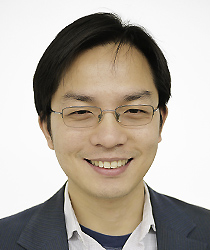 Liangbing Hu
Materials Science and Engineering
Associate Professor
Nanomaterials and nanostructures; energy storage: battery, supercapacitors for various applications; energy conversion: solar cells, solar fuel, transparent electrode, light-trapping; printed electronics including nano-ink, roll-to-roll printing, flexible electronics (display, touch screen, energy), and wearable devices.
Department page
| Group site
Liangbing Hu
Materials Science and Engineering
Associate Professor
Nanomaterials and nanostructures; energy storage: battery, supercapacitors for various applications; energy conversion: solar cells, solar fuel, transparent electrode, light-trapping; printed electronics including nano-ink, roll-to-roll printing, flexible electronics (display, touch screen, energy), and wearable devices.
Department page
| Group site
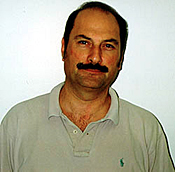 Agis Iliadis
Electrical and Computer Engineering
Professor
Nanostructures
Agis Iliadis
Electrical and Computer Engineering
Professor
Nanostructures
Elemental and Compound Semiconductor Materials and Devices
Wide Band-Gap Semiconductors
Ohmic and Schottky Metallization Systems
Light Emitting Processes
Epitaxial Growth
Department page
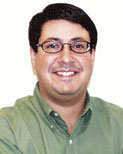 Lyle Isaacs
Chemistry and Biochemistry
Professor
The Isaacs group is interested in supramolecular and synthetic chemistry with an emphasis on molecular container molecules known as cucurbit[n]urils (CB[n]). Molecular containers - most commonly cyclodextrins - have enormous everyday applications including scent release and odor control (e.g. Febreeze) in consumer products and foodstuffs. We believe that CB[n] containers will supplant the cyclodextrins in a variety of practical and academic applications with all the attendant societal impact.
Department page
| Group site
Lyle Isaacs
Chemistry and Biochemistry
Professor
The Isaacs group is interested in supramolecular and synthetic chemistry with an emphasis on molecular container molecules known as cucurbit[n]urils (CB[n]). Molecular containers - most commonly cyclodextrins - have enormous everyday applications including scent release and odor control (e.g. Febreeze) in consumer products and foodstuffs. We believe that CB[n] containers will supplant the cyclodextrins in a variety of practical and academic applications with all the attendant societal impact.
Department page
| Group site
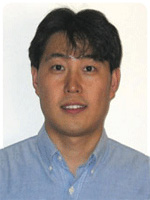 Ki-Yong Kim
Physics
Associate Professor
Ultrafast optical, x-ray, and terahertz science
Ki-Yong Kim
Physics
Associate Professor
Ultrafast optical, x-ray, and terahertz science
High-energy density laboratory plasma
The research in our group is focused on ultrafast lasers and optical science. This includes the study of intense, ultrafast laser interaction with atoms, molecules, solids, and plasmas. In particular, we are interested in generating ultrafast light in a broad spectral range, from terahertz (THz) to x-rays, and applying such electromagnetic pulses to study strong THz field physics, ultrafast THz and x-ray spectroscopy, laser-driven charged particle acceleration, ultrafast nano-optics, and high-energy-density laboratory plasma physics.
Department page
| Group site
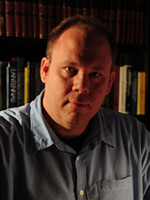 Timothy Koeth
Institute for Research in Electronics and Applied Physics
Director, UMD Nuclear Reactor and Radiation Facilities, Associate Research Professor
Intense electron and ion beam accelerators and associated beam optics. Novel energy storage devices.
Department page
| Group site
Timothy Koeth
Institute for Research in Electronics and Applied Physics
Director, UMD Nuclear Reactor and Radiation Facilities, Associate Research Professor
Intense electron and ion beam accelerators and associated beam optics. Novel energy storage devices.
Department page
| Group site
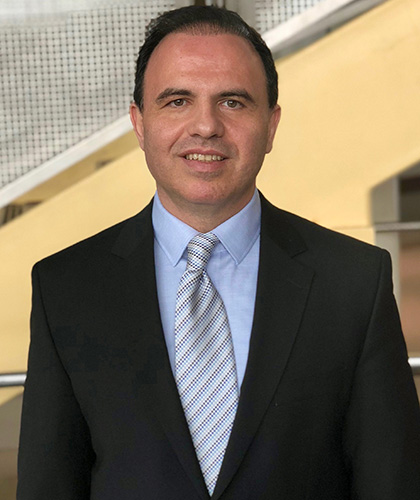 Peter Kofinas
Chemical and Biomolecular Engineering
ChBE Professor and Chair
solution blow spun functional polymers as surgical sealants; biosensors that change color upon detection of pathogens; point-of-care diagnostics for urea cycle disorder metabolites; solid, non-flammable, polymer electrolytes for lithium ion batteries; functional magnetodielectric polymer nanocomposites for flexible antennas.
Department page
| Group site
Peter Kofinas
Chemical and Biomolecular Engineering
ChBE Professor and Chair
solution blow spun functional polymers as surgical sealants; biosensors that change color upon detection of pathogens; point-of-care diagnostics for urea cycle disorder metabolites; solid, non-flammable, polymer electrolytes for lithium ion batteries; functional magnetodielectric polymer nanocomposites for flexible antennas.
Department page
| Group site
 Daniel Lathrop
Physics
Professor
His current research interests include magnetorotational instabillity, turbulent dissipation, magnetoturbulence and dynamos, strongly nonlinear surface waves, ingassing in breaking waves, and chaotic light-scattering.
Department page
| Group site
Daniel Lathrop
Physics
Professor
His current research interests include magnetorotational instabillity, turbulent dissipation, magnetoturbulence and dynamos, strongly nonlinear surface waves, ingassing in breaking waves, and chaotic light-scattering.
Department page
| Group site
 Sang Bok Lee
Chemistry and Biochemistry
NanoCenter Director, Professor
Electrochemistry of heterogeneous nanomaterials for high power energy storage and ultrafast electrochromics.
Sang Bok Lee
Chemistry and Biochemistry
NanoCenter Director, Professor
Electrochemistry of heterogeneous nanomaterials for high power energy storage and ultrafast electrochromics.
Transport, diffusion, and reaction properties of nanopores.
Biosensors, nanoparticle toxicology, targeted drug delivery and chemical & biochemical separation.
Department page
| Group site
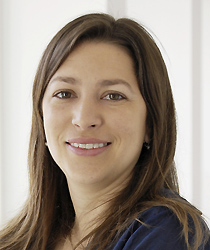 Marina Leite
Materials Science and Engineering
Assistant Professor
Solid-state physics, electronic devices, nanoscale resolution measurements, photovoltaics, energy storage, scanning probe microscopy, nanostructured materials, plasmonics, metamaterials, thermodynamics at the nanoscale, nanofabrication.
Department page
| Group site
Marina Leite
Materials Science and Engineering
Assistant Professor
Solid-state physics, electronic devices, nanoscale resolution measurements, photovoltaics, energy storage, scanning probe microscopy, nanostructured materials, plasmonics, metamaterials, thermodynamics at the nanoscale, nanofabrication.
Department page
| Group site
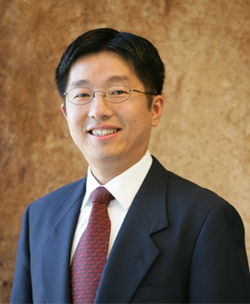 Teng Li
Mechanical Engineering
Keystone Professor
Mechanics of the micro/nano structures in flexible macroelectronics
Teng Li
Mechanical Engineering
Keystone Professor
Mechanics of the micro/nano structures in flexible macroelectronics
Innovative micro/nanoscale patterns as general platforms for flexible macroelectronics
Mechanics of biomembrane and cytoskeleton of the cells
Department page
| Group site
 Dongxia Liu
Chemical and Biomolecular Engineering
Materials synthesis and engineering, reaction engineering, heterogeneous catalysis, fuel cells, biofuels, energy.
Department page
| Group site
Dongxia Liu
Chemical and Biomolecular Engineering
Materials synthesis and engineering, reaction engineering, heterogeneous catalysis, fuel cells, biofuels, energy.
Department page
| Group site
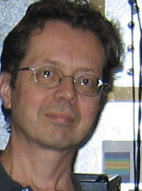 Christopher Lobb
Physics
Professor & Director, CNAM
Properties of Josephson-junction arrays, superconducting phase transition, single-electron transistors, quantum computing using superconducting devices
Department page
| Group site
Christopher Lobb
Physics
Professor & Director, CNAM
Properties of Josephson-junction arrays, superconducting phase transition, single-electron transistors, quantum computing using superconducting devices
Department page
| Group site
 Dionisios Margetis
Mathematics
Professor
My research spans mathematical methods that describe physical phenomena across time and length scales. These methods aim to link microscopic physics with continuum laws. Topics of active interest include:
Dionisios Margetis
Mathematics
Professor
My research spans mathematical methods that describe physical phenomena across time and length scales. These methods aim to link microscopic physics with continuum laws. Topics of active interest include:
1. Modeling and analysis of morphological evolution of nanostructures on crystal surfaces: linkage of atomistic mechanisms to macroscopic effects.
2. Modeling of dynamics of biological membranes, especially membrane interactions with enzymes across length and time scales.
3. Quantum information and computation by use of partial differential equations.
4. Modeling and analysis of atomic gases and superfluids; Bose-Einstein condensation.
5. Electromagnetic wave propagation near boundaries and in various materials (including materials of biological relevance).
Department page
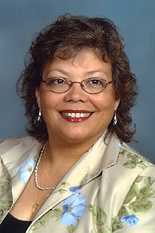 Luz Martinez-Miranda
Materials Science and Engineering
Associate Professor
Liquid Crystals for biological studies and general engineering applications (e.g., displays), X-ray scattering techniques of liquid crystal and other materials.
Department page
Luz Martinez-Miranda
Materials Science and Engineering
Associate Professor
Liquid Crystals for biological studies and general engineering applications (e.g., displays), X-ray scattering techniques of liquid crystal and other materials.
Department page
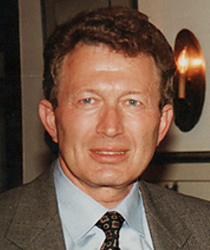 Isaak Mayergoyz
Electrical and Computer Engineering
Alford L. Ward Professor and Distinguished Scholar-Teacher
Distinguished University Professor
Electrostatic (Plasmon) Resonances in Metallic and Semiconductor Nanoparticles, Spintronics, Nonlinear Magnetization Dynamics in Nanosystems, Analysis of Fluctuations in Ultra Small (Nano) Semiconductor Devices, Mathematical Modelling of Hysteresis, Drive Independent Recovery and Forensics of Hard Disk Data ,Computational Electromagnetics,Power Engineering
Department page
Isaak Mayergoyz
Electrical and Computer Engineering
Alford L. Ward Professor and Distinguished Scholar-Teacher
Distinguished University Professor
Electrostatic (Plasmon) Resonances in Metallic and Semiconductor Nanoparticles, Spintronics, Nonlinear Magnetization Dynamics in Nanosystems, Analysis of Fluctuations in Ultra Small (Nano) Semiconductor Devices, Mathematical Modelling of Hysteresis, Drive Independent Recovery and Forensics of Hard Disk Data ,Computational Electromagnetics,Power Engineering
Department page
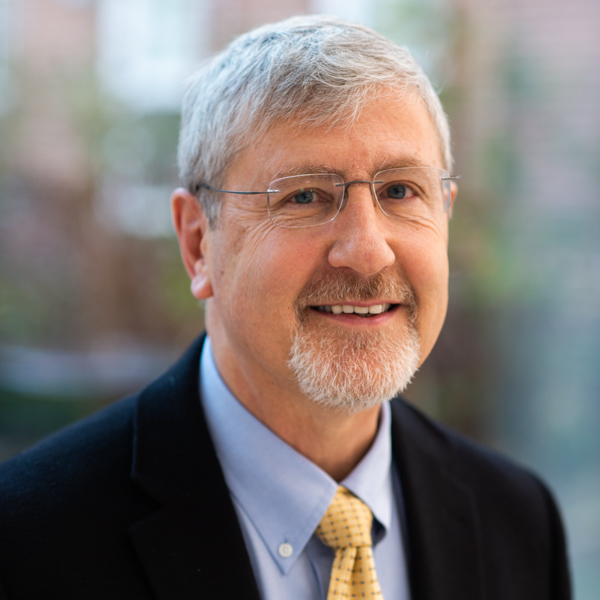 William McDonough
Geology
Professor
Understanding the composition, structure and evolution of the Earth and the other terrestrial planets are dominant themes of my research. The differentiation of the Earth has created 3 separate and distinct reservoirs (i.e., the core, the mantle-crust system, and the atmosphere-hydrosphere system). These reservoirs are in turn themselves internally differentiated and powered in part by radioactively produced energy. Chemical and isotopic studies of terrestrial and meteoritic samples provide insights into the timing and details of the various differentiation processes occurring in these planetary domains.
Department page
| Group site
William McDonough
Geology
Professor
Understanding the composition, structure and evolution of the Earth and the other terrestrial planets are dominant themes of my research. The differentiation of the Earth has created 3 separate and distinct reservoirs (i.e., the core, the mantle-crust system, and the atmosphere-hydrosphere system). These reservoirs are in turn themselves internally differentiated and powered in part by radioactively produced energy. Chemical and isotopic studies of terrestrial and meteoritic samples provide insights into the timing and details of the various differentiation processes occurring in these planetary domains.
Department page
| Group site
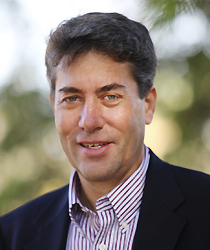 Howard Milchberg
Electrical and Computer Engineering
Professor
Nonlinear optics, laser and optical physics, interaction of intense electromagnetic fields with atoms, solids, and plasmas; generation and application of coherent and incoherent short wavelength radiation.
Department page
| Group site
Howard Milchberg
Electrical and Computer Engineering
Professor
Nonlinear optics, laser and optical physics, interaction of intense electromagnetic fields with atoms, solids, and plasmas; generation and application of coherent and incoherent short wavelength radiation.
Department page
| Group site
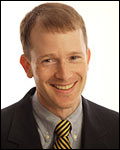 Thomas Murphy
Electrical and Computer Engineering
Professor; Director, Institute for Research in Electronics and Applied Physics
Optical communications, short-pulse phenomena, numerical simulation, optical pulse propagation, nanotechnology and integrated photonics.
Department page
| Group site
Thomas Murphy
Electrical and Computer Engineering
Professor; Director, Institute for Research in Electronics and Applied Physics
Optical communications, short-pulse phenomena, numerical simulation, optical pulse propagation, nanotechnology and integrated photonics.
Department page
| Group site
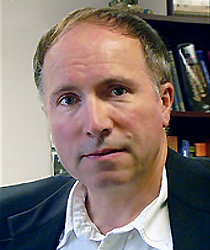 Gottlieb Oehrlein
Materials Science and Engineering
Professor
Applications of low-temperature plasma science and technology to materials processing, surface chemistry and physics of thin film growth, etching and modification, plasma-surface and plasma-polymer interactions, in-situ plasma and surface diagnostics, physics and chemistry of ion-induced surface processes and of imaging and templating materials, nanoscale structure and device fabrication and characterization, surface and bulk defects of materials.
Department page
| Group site
Gottlieb Oehrlein
Materials Science and Engineering
Professor
Applications of low-temperature plasma science and technology to materials processing, surface chemistry and physics of thin film growth, etching and modification, plasma-surface and plasma-polymer interactions, in-situ plasma and surface diagnostics, physics and chemistry of ion-induced surface processes and of imaging and templating materials, nanoscale structure and device fabrication and characterization, surface and bulk defects of materials.
Department page
| Group site
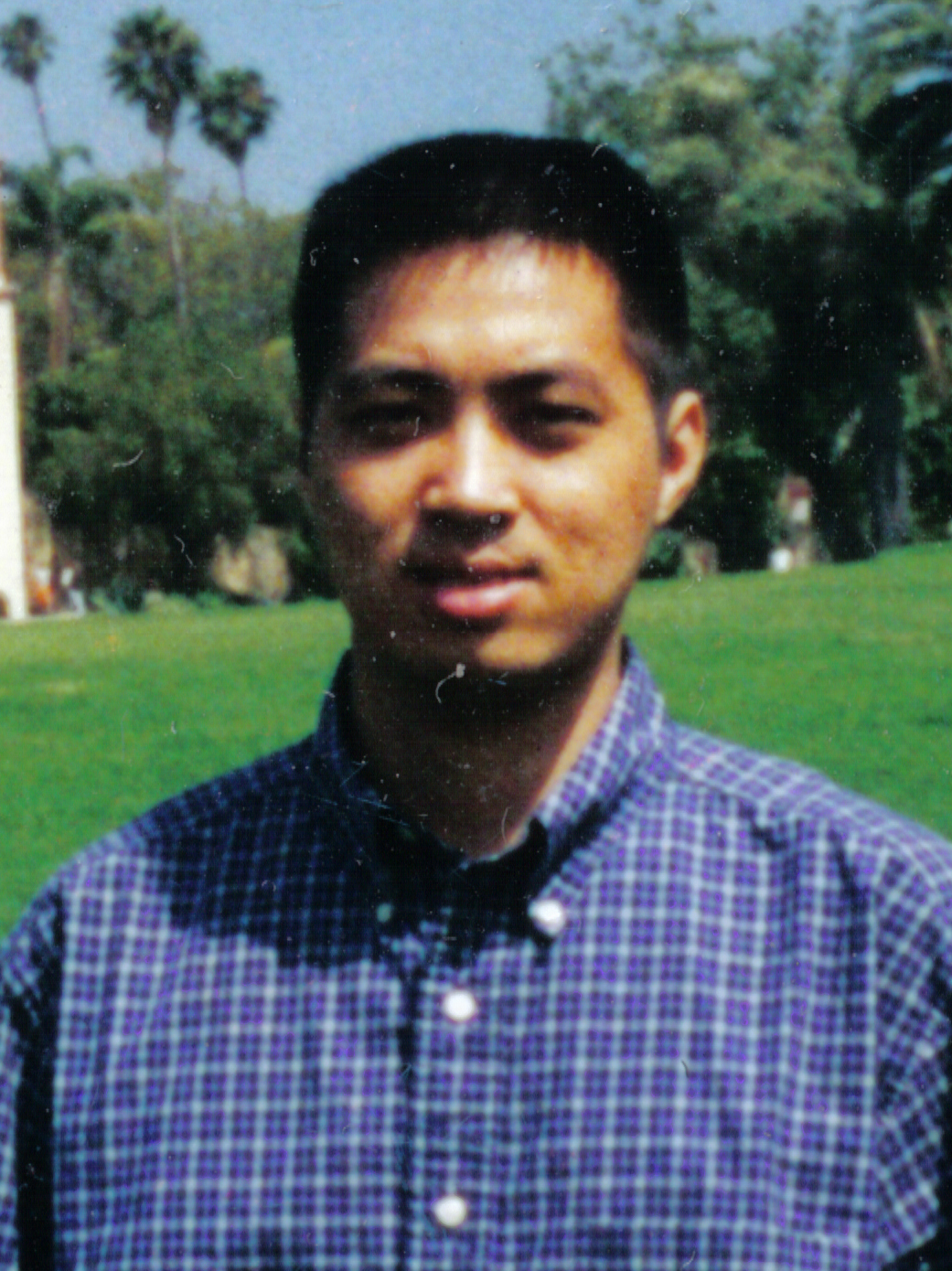 Min Ouyang
Physics
Associate Professor
We are interested in exploring new physics and applications based on the spin degree of freedom of electrons and nuclei within ordered nano-engineered architectures with an emphasis on following areas:
Min Ouyang
Physics
Associate Professor
We are interested in exploring new physics and applications based on the spin degree of freedom of electrons and nuclei within ordered nano-engineered architectures with an emphasis on following areas:
(1) Development of novel synthetic methodologies for novel classess of spin-based hybrid organic-inorganic nanostructures.
(2) Investigation of fundamental basis for spin-charge interactions and spin transport within nanostructured systems with new experimental techniques such as femtosecond optical spectroscopy, magnetotransport and low temperature scanning probe microscopy.
(3) Realization of new functional nanospintronic devices and technologies
Department page
| Group site
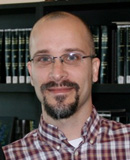 Paul Paukstelis
Chemistry and Biochemistry
Associate Professor
Much of our work is geared toward being able to rationally design DNA crystals for nanotechnology applications. We described the first rationally designed 3-D DNA crystals, based on a predictable non-canonical base pairing motif. Subsequently, we have demonstrated that these crystals contain a network of solvent channels into which macromolecules can be absorbed or excluded based on size. Building on this work, we have demonstrated that protein enzymes encapsulated in the DNA crystals are active (Geng & Paukstelis, 2014), making these the first example of DNA-based solid-state biocatalysts. My laboratory is continuing to develop DNA-based technologies at the emerging interface between biology, materials science, and engineering.
Department page
Paul Paukstelis
Chemistry and Biochemistry
Associate Professor
Much of our work is geared toward being able to rationally design DNA crystals for nanotechnology applications. We described the first rationally designed 3-D DNA crystals, based on a predictable non-canonical base pairing motif. Subsequently, we have demonstrated that these crystals contain a network of solvent channels into which macromolecules can be absorbed or excluded based on size. Building on this work, we have demonstrated that protein enzymes encapsulated in the DNA crystals are active (Geng & Paukstelis, 2014), making these the first example of DNA-based solid-state biocatalysts. My laboratory is continuing to develop DNA-based technologies at the emerging interface between biology, materials science, and engineering.
Department page
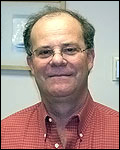 Martin Peckerar
Electrical and Computer Engineering
Professor Emeritus
Microelectronics Integrated circuits Microstructure science and technology Analog and mixed signal design
Department page
| Group site
Martin Peckerar
Electrical and Computer Engineering
Professor Emeritus
Microelectronics Integrated circuits Microstructure science and technology Analog and mixed signal design
Department page
| Group site
 Raymond Phaneuf
Materials Science and Engineering
Professor
Ray Phaneuf's research includes experimental studies of directed self-assembly and self-organization, nanoparticle enhanced-spectroscopy, surface faceting transitions, surface phase formation in reactive systems, and the use of surface sensitive electron microcopies in characterizing structures and devices at the nanometer scale.
Department page
| Group site
Raymond Phaneuf
Materials Science and Engineering
Professor
Ray Phaneuf's research includes experimental studies of directed self-assembly and self-organization, nanoparticle enhanced-spectroscopy, surface faceting transitions, surface phase formation in reactive systems, and the use of surface sensitive electron microcopies in characterizing structures and devices at the nanometer scale.
Department page
| Group site
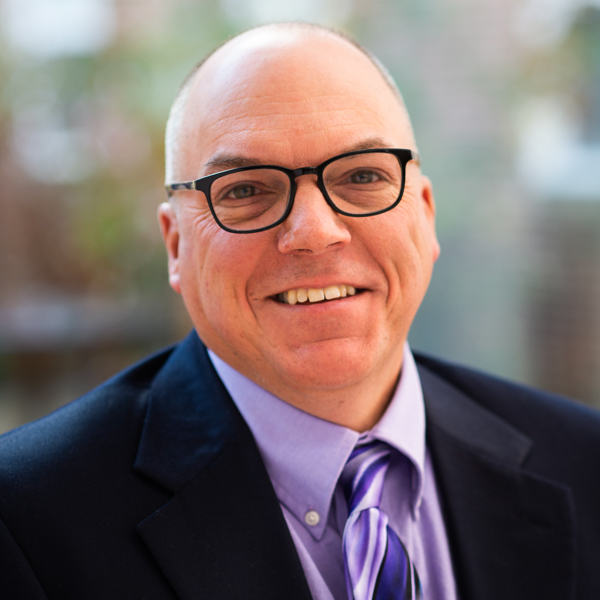 Philip Piccoli
Geology
AIM Lab Staff
Electron microprobe; Field studies of silicic igneous rocks; role of accessory phases in granitic systems; microanalysis of rock-forming minerals; geochemistry of fluids associated with plutonic and volcanic systems
Department page
| Group site
Philip Piccoli
Geology
AIM Lab Staff
Electron microprobe; Field studies of silicic igneous rocks; role of accessory phases in granitic systems; microanalysis of rock-forming minerals; geochemistry of fluids associated with plutonic and volcanic systems
Department page
| Group site
 Oded Rabin
Materials Science and Engineering
Associate Professor
Synthesis and physical properties of nanowires and porous thin films, electrical and thermal transport in low dimensional systems, nanoporous membranes, interfacial nanoscience (including organic-inorganic systems, Ccntrolled assembly, scattering, and surface plasmons), thermal and electrical transport, applications in sensing, microfluidics, and chromatography.
Department page
| Group site
Oded Rabin
Materials Science and Engineering
Associate Professor
Synthesis and physical properties of nanowires and porous thin films, electrical and thermal transport in low dimensional systems, nanoporous membranes, interfacial nanoscience (including organic-inorganic systems, Ccntrolled assembly, scattering, and surface plasmons), thermal and electrical transport, applications in sensing, microfluidics, and chromatography.
Department page
| Group site
 Srinivasa Raghavan
Chemical and Biomolecular Engineering
Professor
Self-assembled systems, containers for drug delivery, "smart" fluids, polymer and colloidal gels, polymer-CNT nanocomposites, scattering techniques/rheology.
Department page
| Group site
Srinivasa Raghavan
Chemical and Biomolecular Engineering
Professor
Self-assembled systems, containers for drug delivery, "smart" fluids, polymer and colloidal gels, polymer-CNT nanocomposites, scattering techniques/rheology.
Department page
| Group site
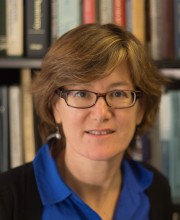 Janice Reutt-Robey
Chemistry and Biochemistry
Professor & Chair, Chemistry
Our research centers on the formation of chemical interfaces and nanostructures with targeted electronic and chemical properties for application in energy production and storage and nanotechnology. Fundamentally, we are interested in configuring atomic and molecular arrangements in films and supported nanostructures to impact dynamical processes - such as diffusion, charge-transfer and chemical binding. New electronic device concepts, based upon low-dimensional material interfaces, are investigated. Our main experimental tools are ultrahigh vacuum (UHV) scanned probe microscopies and surface spectroscopies, developed in combination with novel deposition methods.
Department page
| Group site
Janice Reutt-Robey
Chemistry and Biochemistry
Professor & Chair, Chemistry
Our research centers on the formation of chemical interfaces and nanostructures with targeted electronic and chemical properties for application in energy production and storage and nanotechnology. Fundamentally, we are interested in configuring atomic and molecular arrangements in films and supported nanostructures to impact dynamical processes - such as diffusion, charge-transfer and chemical binding. New electronic device concepts, based upon low-dimensional material interfaces, are investigated. Our main experimental tools are ultrahigh vacuum (UHV) scanned probe microscopies and surface spectroscopies, developed in combination with novel deposition methods.
Department page
| Group site
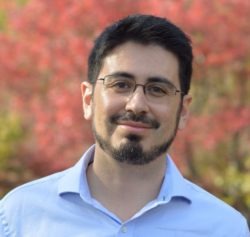 Efrain Rodriguez
Chemistry and Biochemistry
Associate Professor & DIrector of Chemistry Graduate Program
Materials and solid state chemistry. Inorganic materials. Synthesis and characterization of transition metal compounds including oxides, chalcogenides and pnictides. Preparation of metastable materials for energy applications via chemie douce, or soft chemical, methods. Functional inorganci compounds with properties such as magnetic, electronic, and mixed conductivity (ionic and electrical). Advanced characterization of compounds including X-ray and neutron diffraction coupled with magnetization and electrical transport measurements.
Department page
| Group site
Efrain Rodriguez
Chemistry and Biochemistry
Associate Professor & DIrector of Chemistry Graduate Program
Materials and solid state chemistry. Inorganic materials. Synthesis and characterization of transition metal compounds including oxides, chalcogenides and pnictides. Preparation of metastable materials for energy applications via chemie douce, or soft chemical, methods. Functional inorganci compounds with properties such as magnetic, electronic, and mixed conductivity (ionic and electrical). Advanced characterization of compounds including X-ray and neutron diffraction coupled with magnetization and electrical transport measurements.
Department page
| Group site
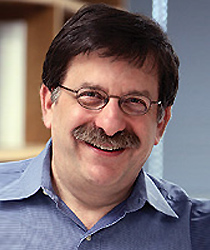 Gary Rubloff
Materials Science and Engineering
Distinguished University Professor; Minta Martin Professor of Engineering; Director, Nanostructures for Electrical Energy Storage
Multifunctional nanostructures for energy storage and capture, atomic layer deposition (ALD) process, mechanisms, and technology, nanoscale devices for quantum computing.
Department page
| Group site
Gary Rubloff
Materials Science and Engineering
Distinguished University Professor; Minta Martin Professor of Engineering; Director, Nanostructures for Electrical Energy Storage
Multifunctional nanostructures for energy storage and capture, atomic layer deposition (ALD) process, mechanisms, and technology, nanoscale devices for quantum computing.
Department page
| Group site
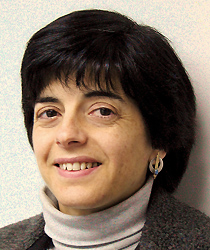 Lourdes Salamanca-Riba
Materials Science and Engineering
Professor
Nanocomposites of ferroelectric-/-magnetic oxides, solid oxide fuel cells (SOFC), metals containing nano-carbon structures called Covetics; 4H SiC based MOSFETS for high temperature, high power applications, transmission electron microscopy of semiconductor nanowires, optical properties of materials, hybrid phtovoltaic nanocompostites.
Department page
Lourdes Salamanca-Riba
Materials Science and Engineering
Professor
Nanocomposites of ferroelectric-/-magnetic oxides, solid oxide fuel cells (SOFC), metals containing nano-carbon structures called Covetics; 4H SiC based MOSFETS for high temperature, high power applications, transmission electron microscopy of semiconductor nanowires, optical properties of materials, hybrid phtovoltaic nanocompostites.
Department page
 Benjamin Shapiro
Fischell Dept. of Bioengineering
Professor
My group is focused on all aspects of micro-system control, from initial determination of the dominant physics, to model development, control problem statement and algorithm design, to experimental verification.
Department page
| Group site
Benjamin Shapiro
Fischell Dept. of Bioengineering
Professor
My group is focused on all aspects of micro-system control, from initial determination of the dominant physics, to model development, control problem statement and algorithm design, to experimental verification.
Department page
| Group site
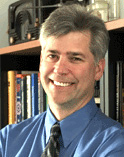 Larry Sita
Chemistry and Biochemistry
Professor
Transition and Main Group Metal Inorganic and Organometallic
Chemistry, New Synthetic Methodology, Catalyst Development, Polymers, Chemically-Tailored Surfaces and Interfaces, Molecular and Mesoscopic Self-Assembly, New Nanofabrication Processes
Department page
| Group site
Larry Sita
Chemistry and Biochemistry
Professor
Transition and Main Group Metal Inorganic and Organometallic
Chemistry, New Synthetic Methodology, Catalyst Development, Polymers, Chemically-Tailored Surfaces and Interfaces, Molecular and Mesoscopic Self-Assembly, New Nanofabrication Processes
Department page
| Group site
 Elisabeth Smela
Mechanical Engineering
Professor
Dr. Smela's research is primarily in the field of microelectromechanical systems (MEMS), particularly polymer MEMS and bioMEMS. She focuses on the use of organic materials (from polymers to cells) in microsystems to realize microactuators, cell-based sensors, and CMOS/MEMS integrated systems.
Department page
| Group site
Elisabeth Smela
Mechanical Engineering
Professor
Dr. Smela's research is primarily in the field of microelectromechanical systems (MEMS), particularly polymer MEMS and bioMEMS. She focuses on the use of organic materials (from polymers to cells) in microsystems to realize microactuators, cell-based sensors, and CMOS/MEMS integrated systems.
Department page
| Group site
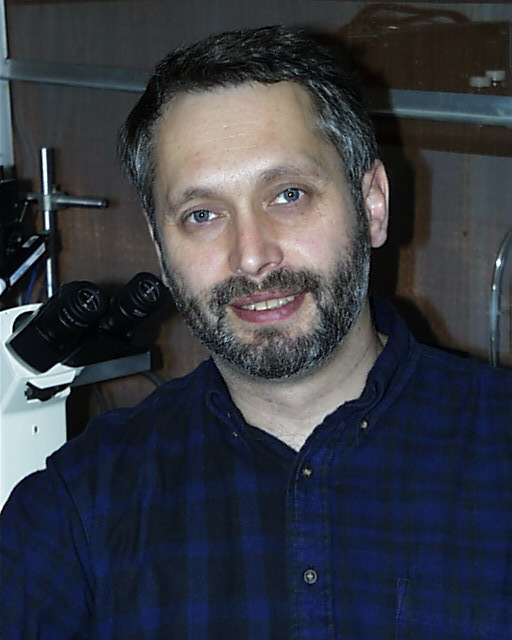 Sergei Sukharev
Biology
Professor
Dr. Sukharev investigates the principles and the molecules that cells use to detect mechanical force and pressure. Mechanosensation encompasses many phenomena from the relatively simple such as bacterial adaptation to osmotic changes in the medium to the very complex such as hearing and balance in animals, or gravitropism in plants; yet many primary receptors responsible for force detection remain unidentified as molecular entities. Mechanosensitive channels that conduct ions across the plasma membrane in response to membrane tension are thought to be primary transducers that convert mechanical stimuli into the form of cellular signals. Dr. Sukharev has made the major effort in isolation and cloning of the Mechanosensitive Channel of Large conductance of Escherichia coli (MscL), the first identified channel of this class. When the closed-state crystal structure of a MscL homolog became available, Dr. Sukharev focused his research on prediction of MscL structure in the open state. His current study addresses the nature of interactions inside the MscL protein that keep the channel firmly closed at rest, but allow it to open under tension of a certain magnitude. The group is also approaching the mechanism of gating of the small bacterial Mechanosensitive Channel, MscS. These interdisciplinary projects involve molecular modeling and simulations, genetic modifications of the channel genes, disulfide cross-linking, biochemical purification of proteins and reconstitution into phospholipid membranes; single-channel recording and video imaging of patch-clamped membranes; kinetic and thermodynamic analysis of the channel behavior.
Department page
| Group site
Sergei Sukharev
Biology
Professor
Dr. Sukharev investigates the principles and the molecules that cells use to detect mechanical force and pressure. Mechanosensation encompasses many phenomena from the relatively simple such as bacterial adaptation to osmotic changes in the medium to the very complex such as hearing and balance in animals, or gravitropism in plants; yet many primary receptors responsible for force detection remain unidentified as molecular entities. Mechanosensitive channels that conduct ions across the plasma membrane in response to membrane tension are thought to be primary transducers that convert mechanical stimuli into the form of cellular signals. Dr. Sukharev has made the major effort in isolation and cloning of the Mechanosensitive Channel of Large conductance of Escherichia coli (MscL), the first identified channel of this class. When the closed-state crystal structure of a MscL homolog became available, Dr. Sukharev focused his research on prediction of MscL structure in the open state. His current study addresses the nature of interactions inside the MscL protein that keep the channel firmly closed at rest, but allow it to open under tension of a certain magnitude. The group is also approaching the mechanism of gating of the small bacterial Mechanosensitive Channel, MscS. These interdisciplinary projects involve molecular modeling and simulations, genetic modifications of the channel genes, disulfide cross-linking, biochemical purification of proteins and reconstitution into phospholipid membranes; single-channel recording and video imaging of patch-clamped membranes; kinetic and thermodynamic analysis of the channel behavior.
Department page
| Group site
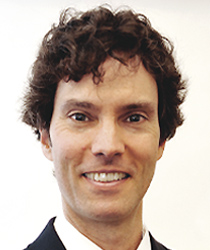 Peter Sunderland
Fire Protection Engineering
Professor; Director, Undergraduate Studies
Combustion and fire safety, including soot formation and oxidation, microgravity combustion, refrigerant flammability, hydrogen flames, laminar diffusion flames, sodium fires, battery fires, vehicle fires, and diagnostics development.
Department page
Peter Sunderland
Fire Protection Engineering
Professor; Director, Undergraduate Studies
Combustion and fire safety, including soot formation and oxidation, microgravity combustion, refrigerant flammability, hydrogen flames, laminar diffusion flames, sodium fires, battery fires, vehicle fires, and diagnostics development.
Department page
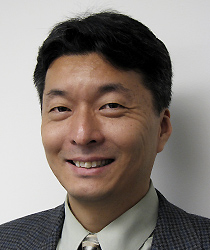 Ichiro Takeuchi
Materials Science and Engineering
Professor; Director, Graduate Program
Applications of combinatorial synthesis and characterization methodology to electronic, magnetic and smart materials; fabrication and characterization of novel multilayer thin-film devices; variable temperature scanning probe microscopes.
Department page
Ichiro Takeuchi
Materials Science and Engineering
Professor; Director, Graduate Program
Applications of combinatorial synthesis and characterization methodology to electronic, magnetic and smart materials; fabrication and characterization of novel multilayer thin-film devices; variable temperature scanning probe microscopes.
Department page
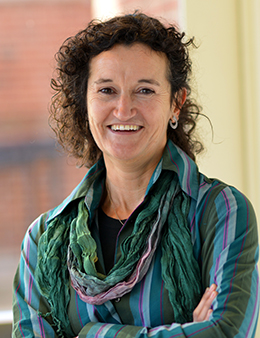 Alba Torrents
Civil and Environmental Engineering
Professor
Fate and transport of organic pollutants in the environment
Alba Torrents
Civil and Environmental Engineering
Professor
Fate and transport of organic pollutants in the environment
Fate of endocrine disrupting chemicals upon release from wastewater treatment plants and the land application of biosolids
Department page
| Group site
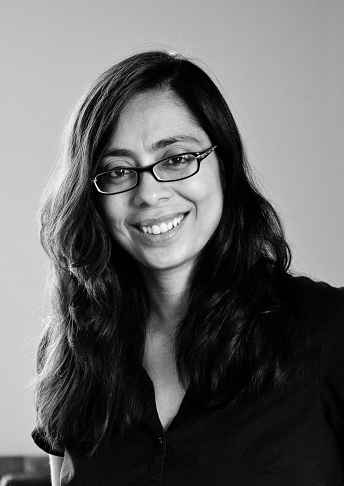 Arpita Upadhyaya
Institute for Physical Science and Technology
Associate Professor
The theme of my research is to understand various aspects of biological motion - its physical basis and its biochemical control. Motion is one of the most defining attributes of living things and involves a series of mechanical transduction processes between the release of chemical energy and actual movement. Nature has engineered many molecular and cellular machines that induce motion at different scales - from the level of a single molecule to that of multicellular tissues.
Department page
| Group site
Arpita Upadhyaya
Institute for Physical Science and Technology
Associate Professor
The theme of my research is to understand various aspects of biological motion - its physical basis and its biochemical control. Motion is one of the most defining attributes of living things and involves a series of mechanical transduction processes between the release of chemical energy and actual movement. Nature has engineered many molecular and cellular machines that induce motion at different scales - from the level of a single molecule to that of multicellular tissues.
Department page
| Group site
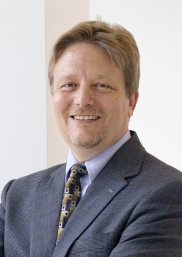 Eric Wachsman
Materials Science and Engineering
Director, University of Maryland Energy Research Center (UMERC), William L. Crentz Centennial Chair in Energy Research
Solid state batteries
Eric Wachsman
Materials Science and Engineering
Director, University of Maryland Energy Research Center (UMERC), William L. Crentz Centennial Chair in Energy Research
Solid state batteries
Solid oxide fuel cells
Membrane and membrane reactors
Solid state sensors
Electrocatalysis and catalysis
Ionic transport in solids
Themo-chmical/mechanical properties of materials
Department page
| Group site
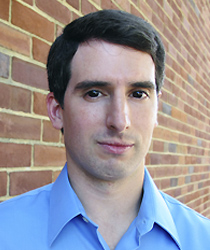 Edo Waks
Electrical and Computer Engineering
Professor
Application of photonic crystals to quantum information processing
Edo Waks
Electrical and Computer Engineering
Professor
Application of photonic crystals to quantum information processing
Use of photonic crystals for practical tools in optical telecommunication and sensing
Department page
| Group site
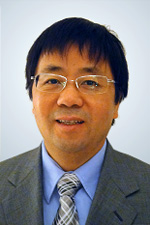 Chunsheng Wang
Chemical and Biomolecular Engineering
Professor; R.F. and F.R. Wright Distinguished Chair
Rechargeable batteries, Applied electrochemistry, Fuel cells, electroanalytical technologies, Nanostructured materials, Electrochemical gas separation and compression
Department page
| Group site
Chunsheng Wang
Chemical and Biomolecular Engineering
Professor; R.F. and F.R. Wright Distinguished Chair
Rechargeable batteries, Applied electrochemistry, Fuel cells, electroanalytical technologies, Nanostructured materials, Electrochemical gas separation and compression
Department page
| Group site
 Nam Sun Wang
Chemical and Biomolecular Engineering
Professor
Microbial Fermentation, Insect/mammalian Cell Culture, Tissue Culture, Bioseparation, Modeling, Protein/Enzyme Immobilization, Drug Delivery, Angiogenesis, NIR, Fluorescence, Light Scattering, Protein Array, Antibody-Antigen Interaction, DNA-DNA hybridiza
Department page
| Group site
Nam Sun Wang
Chemical and Biomolecular Engineering
Professor
Microbial Fermentation, Insect/mammalian Cell Culture, Tissue Culture, Bioseparation, Modeling, Protein/Enzyme Immobilization, Drug Delivery, Angiogenesis, NIR, Fluorescence, Light Scattering, Protein Array, Antibody-Antigen Interaction, DNA-DNA hybridiza
Department page
| Group site
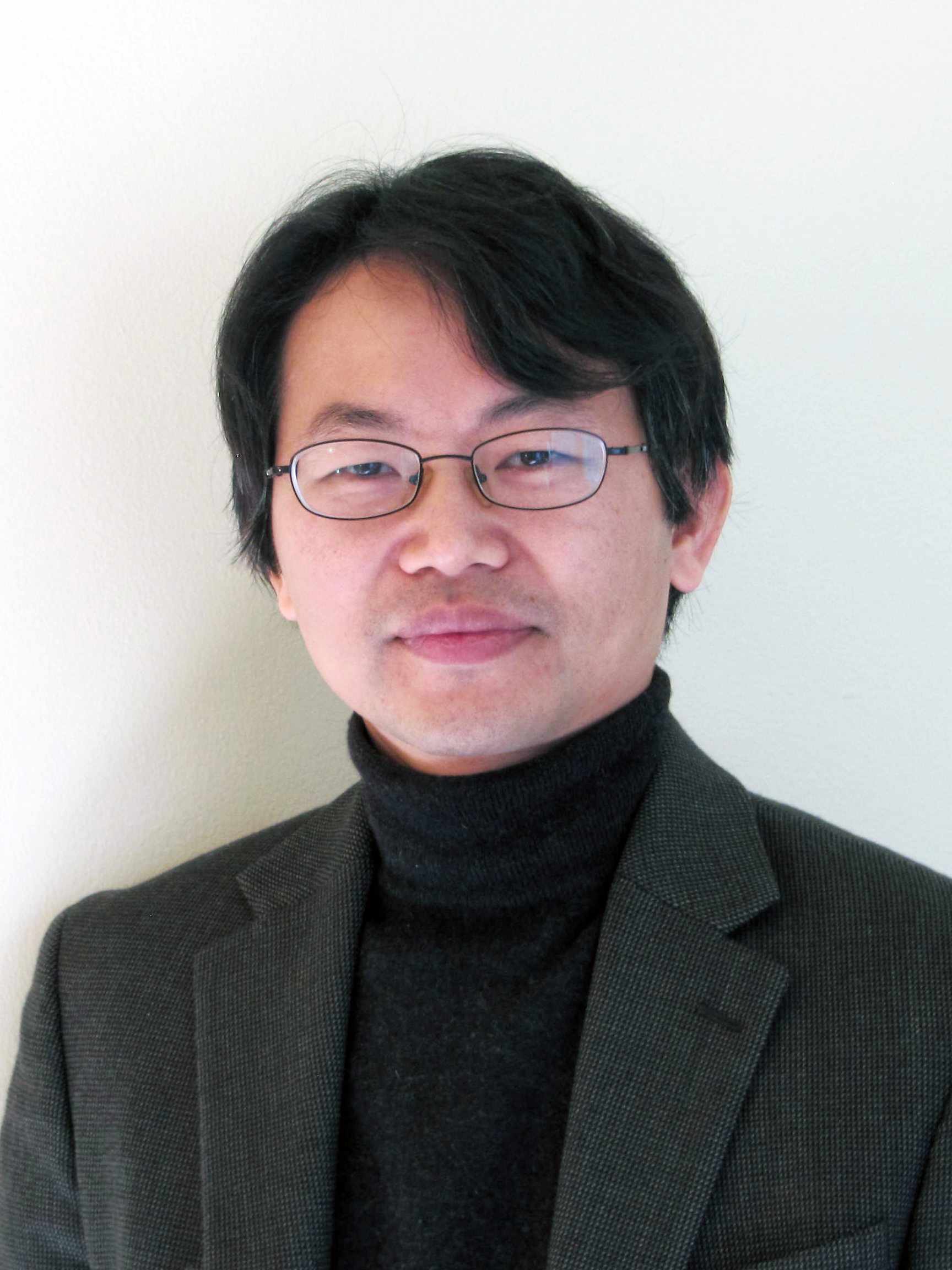 YuHuang Wang
Chemistry and Biochemistry
Professor
Quantum defects, Tube^2, materials and physical chemistry of nanocarbon, collective properties of super nanostructures, nanofabrication, energy science, biomedical technology.
Department page
| Group site
YuHuang Wang
Chemistry and Biochemistry
Professor
Quantum defects, Tube^2, materials and physical chemistry of nanocarbon, collective properties of super nanostructures, nanofabrication, energy science, biomedical technology.
Department page
| Group site
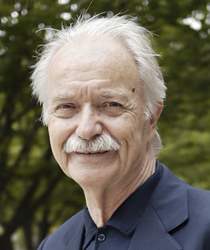 Manfred Wuttig
Materials Science and Engineering
Professor
Phase transformations, self-organized materials, magnetoelectrics, nanomagnetism.
Department page
Manfred Wuttig
Materials Science and Engineering
Professor
Phase transformations, self-organized materials, magnetoelectrics, nanomagnetism.
Department page
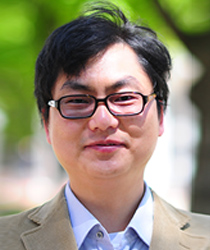 Bao Yang
Mechanical Engineering
Professor
Micro/nanoscale thermal transport and energy conversion Thermal science and its applications in electrical engineering, optical engineering, and material science Micro/nano devices MEMS Nanotechnology
Department page
Bao Yang
Mechanical Engineering
Professor
Micro/nanoscale thermal transport and energy conversion Thermal science and its applications in electrical engineering, optical engineering, and material science Micro/nano devices MEMS Nanotechnology
Department page
 Miao Yu
Mechanical Engineering
Professor
Optical sensors Sensor mechanics and material behavior at multiple spatial scales Micro-scale and nano-scale sensor systems Sensors for civil, mechanical, electrical, biochemical, biomechanics, biology, medical, and environmental applications, and sensor networks Adaptive optics Wavefront sensing and control Imaging through turbulence Smart materials and structures Theoretical and experimental mechanics
Department page
Miao Yu
Mechanical Engineering
Professor
Optical sensors Sensor mechanics and material behavior at multiple spatial scales Micro-scale and nano-scale sensor systems Sensors for civil, mechanical, electrical, biochemical, biomechanics, biology, medical, and environmental applications, and sensor networks Adaptive optics Wavefront sensing and control Imaging through turbulence Smart materials and structures Theoretical and experimental mechanics
Department page
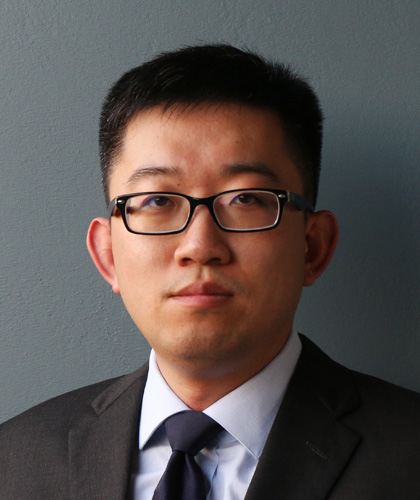 Chen Zhang
Chemical and Biomolecular Engineering
Assistant Professor
Membrane science, transport in nanoporous materials, advanced hollow fibers, and sustainable separation processes.
Department page
| Group site
Chen Zhang
Chemical and Biomolecular Engineering
Assistant Professor
Membrane science, transport in nanoporous materials, advanced hollow fibers, and sustainable separation processes.
Department page
| Group site
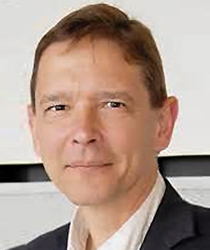 Raymond Adomaitis
Chemical and Biomolecular Engineering
Professor
Systems modeling and simulation, semiconductor manufacturing
Department page
| Group site
Raymond Adomaitis
Chemical and Biomolecular Engineering
Professor
Systems modeling and simulation, semiconductor manufacturing
Department page
| Group site
 Mikhail Anisimov
Chemical and Biomolecular Engineering
Distinguished University Professor
Mesoscopic and nanoscale thermodynamics, critical phenomena, and phase transitions in soft matter.
Department page
| Group site
Mikhail Anisimov
Chemical and Biomolecular Engineering
Distinguished University Professor
Mesoscopic and nanoscale thermodynamics, critical phenomena, and phase transitions in soft matter.
Department page
| Group site
 Steven Anlage
Physics
Professor
The use of near-field microwave microscopes to investigate the nanoscale fundamental physics of correlated electron systems
Steven Anlage
Physics
Professor
The use of near-field microwave microscopes to investigate the nanoscale fundamental physics of correlated electron systems Ian Appelbaum
Physics
Professor
Semiconductor device physics:
Spin-polarized electron injection, transport, and detection
Polarized radiative transitions within the donor spectrum and THz devices
Electron spin resonance
Experimental search for bound Majorana fermions
Department page
| Group site
Ian Appelbaum
Physics
Professor
Semiconductor device physics:
Spin-polarized electron injection, transport, and detection
Polarized radiative transitions within the donor spectrum and THz devices
Electron spin resonance
Experimental search for bound Majorana fermions
Department page
| Group site
 Helim Aranda-Espinoza
Fischell Dept. of Bioengineering
Associate Professor
Application of the theoretical and experimental machinery of physics and engineering to obtain a quantitative understanding of specific problems inspired by biological systems. Specifically, our long term aims are to develop a fundamental understanding on cell mechanics and the mechanisms by which motile cells adhere, spread, and crawl over adhesive substrata with a primary focus on neurons and cells involved in cardiovascular disease.
Department page
| Group site
Helim Aranda-Espinoza
Fischell Dept. of Bioengineering
Associate Professor
Application of the theoretical and experimental machinery of physics and engineering to obtain a quantitative understanding of specific problems inspired by biological systems. Specifically, our long term aims are to develop a fundamental understanding on cell mechanics and the mechanisms by which motile cells adhere, spread, and crawl over adhesive substrata with a primary focus on neurons and cells involved in cardiovascular disease.
Department page
| Group site
 William Bentley
Fischell Dept. of Bioengineering
Director, Robert E. Fischell Institute for Biomedical Devices; Robert E. Fischell Distinguished Professor
Biomolecular and metabolic engineering, cell-to-cell communication, heterologous protein expression, device/bio interfaces.
Department page
| Group site
William Bentley
Fischell Dept. of Bioengineering
Director, Robert E. Fischell Institute for Biomedical Devices; Robert E. Fischell Distinguished Professor
Biomolecular and metabolic engineering, cell-to-cell communication, heterologous protein expression, device/bio interfaces.
Department page
| Group site
 Robert Briber
Materials Science and Engineering
Associate Dean for Research, A. James Clark School of Engineering
Thermodynamics of Complex Polymer Systems, Structural Solutions of Novel Molecules, Nanoscale materials and structure, X-ray and neutron scattering.
Department page
| Group site
Robert Briber
Materials Science and Engineering
Associate Dean for Research, A. James Clark School of Engineering
Thermodynamics of Complex Polymer Systems, Structural Solutions of Novel Molecules, Nanoscale materials and structure, X-ray and neutron scattering.
Department page
| Group site
 Hugh Bruck
Mechanical Engineering
Associate Dean for Faculty Affairs; Professor
New techniques for rapid manufacturing and characterization of functionally graded, multifunctional, biologically-inspired, and nanocomposite materials.
Hugh Bruck
Mechanical Engineering
Associate Dean for Faculty Affairs; Professor
New techniques for rapid manufacturing and characterization of functionally graded, multifunctional, biologically-inspired, and nanocomposite materials. Kyu Yong Choi
Chemical and Biomolecular Engineering
Professor
Modeling and design of polymeric nanomaterials including miniemulsion, precipitation polymerization, template synthesis technique; development of novel applications of nanoparticle-containing materials in coatings and display technology
Department page
| Group site
Kyu Yong Choi
Chemical and Biomolecular Engineering
Professor
Modeling and design of polymeric nanomaterials including miniemulsion, precipitation polymerization, template synthesis technique; development of novel applications of nanoparticle-containing materials in coatings and display technology
Department page
| Group site
 Aris Christou
Materials Science and Engineering
Professor
Radiation effects in microelectronics, radiation hard design methodologies and
the physics of failure of compound semiconductors in space applications.
Research in materials degradation, radiation induced defects in metals,
corrosion effects and high pressure induced transformations in steels and iron alloys.
Department page
| Group site
Aris Christou
Materials Science and Engineering
Professor
Radiation effects in microelectronics, radiation hard design methodologies and
the physics of failure of compound semiconductors in space applications.
Research in materials degradation, radiation induced defects in metals,
corrosion effects and high pressure induced transformations in steels and iron alloys.
Department page
| Group site
 John Cumings
Materials Science and Engineering
Associate Professor
The primary goal of my research is to advance the current understanding of the dynamic properties of nanoscale systems. The future of many fields of the physical and biological sciences lies in nanotechnology, and as the size of functional devices progresses ever smaller, there will inevitably be problems that can only be addressed by direct real-time observations. A number of research groups are focusing on using scanned probe techniques, such as scanning tunneling microscopy (STM) and atomic-force microscopy (AFM), to explore dynamic properties at the nanoscale, but these slow imaging techniques are poor at capturing these effects. My research goes beyond this approach by using real-time imaging techniques, such as transmission electron microscopy (TEM) to explore fundamental physics on small length scales.
Department page
| Group site
John Cumings
Materials Science and Engineering
Associate Professor
The primary goal of my research is to advance the current understanding of the dynamic properties of nanoscale systems. The future of many fields of the physical and biological sciences lies in nanotechnology, and as the size of functional devices progresses ever smaller, there will inevitably be problems that can only be addressed by direct real-time observations. A number of research groups are focusing on using scanned probe techniques, such as scanning tunneling microscopy (STM) and atomic-force microscopy (AFM), to explore dynamic properties at the nanoscale, but these slow imaging techniques are poor at capturing these effects. My research goes beyond this approach by using real-time imaging techniques, such as transmission electron microscopy (TEM) to explore fundamental physics on small length scales.
Department page
| Group site
 Mario Dagenais
Electrical and Computer Engineering
Professor
Professor Dagenais' research interests are in Si3N4/SiO2 integrated nanophotonic devices on Si, complex waveguide Bragg gratings and genetic algorithm, quantum information and integration, GaN light sources, and quantum dot GaAs/AlGaAs, CIGS and perovskite photovoltaics. He also has interest in high power semiconductor laser sources, semiconductor optical amplifiers (SOAs), superluminescent LEDs, detectors, modulators, and in the integration of these components.
Department page
| Group site
Mario Dagenais
Electrical and Computer Engineering
Professor
Professor Dagenais' research interests are in Si3N4/SiO2 integrated nanophotonic devices on Si, complex waveguide Bragg gratings and genetic algorithm, quantum information and integration, GaN light sources, and quantum dot GaAs/AlGaAs, CIGS and perovskite photovoltaics. He also has interest in high power semiconductor laser sources, semiconductor optical amplifiers (SOAs), superluminescent LEDs, detectors, modulators, and in the integration of these components.
Department page
| Group site
 Kevin Daniels
Accounting
His current research interest include the growth of various metallic, semiconducting and insulating two-dimensional materials, particularly transition metal oxides and dichalcogenides, for environmental and biological sensors, batteries, and fuel cells. He has co-authored over 30 publications in the fields of material growth, electrochemistry and plasmonics and has given over 20 conference presentations.
Department page
| Group site
Kevin Daniels
Accounting
His current research interest include the growth of various metallic, semiconducting and insulating two-dimensional materials, particularly transition metal oxides and dichalcogenides, for environmental and biological sensors, batteries, and fuel cells. He has co-authored over 30 publications in the fields of material growth, electrochemistry and plasmonics and has given over 20 conference presentations.
Department page
| Group site
 Abhijit Dasgupta
Mechanical Engineering
Professor
Mechanics of electronic packaging materials and "smart" composite materials Research focused on nanomechanics, micromechanics, damage mechanics and computational mechanics. Nano-mechanics, nano-manufacturing and nano-product development.
Department page
| Group site
Abhijit Dasgupta
Mechanical Engineering
Professor
Mechanics of electronic packaging materials and "smart" composite materials Research focused on nanomechanics, micromechanics, damage mechanics and computational mechanics. Nano-mechanics, nano-manufacturing and nano-product development.
Department page
| Group site
 Christopher Davis
Electrical and Computer Engineering
Minta Martin Professor of Engineering
Free space optical and directional RF communication systems, atmospheric turbulence, advanced surveillance systems, plasmonics, chemical and biological sensors, interferometry, optical systems, bioelectromagnetics, RF dosimetry. Currently active research includes optical and RF directional wireless, real-time advanced surveillance systems with "event" detection, the optical properties of nanostructures where surface plasmons can be excited, laser interferometry, dielectrometry, fiber sensors and biosensors, magnetooptics, optical trace detection, atmospheric turbulence, optical communication systems and devices, and studies of the biological effects of non-ionizingradiation. His past research has covered gas lasers, photon counting, chemical lasers, molecular relaxation processes, diode-pumped solid-state lasers, laser noise and instabilities, injection locking of broad area laser diodes, nonlinear imaging of ferroelectric and ferromagnetic materials, and near-field scanning optical microscopy.
Department page
| Group site
Christopher Davis
Electrical and Computer Engineering
Minta Martin Professor of Engineering
Free space optical and directional RF communication systems, atmospheric turbulence, advanced surveillance systems, plasmonics, chemical and biological sensors, interferometry, optical systems, bioelectromagnetics, RF dosimetry. Currently active research includes optical and RF directional wireless, real-time advanced surveillance systems with "event" detection, the optical properties of nanostructures where surface plasmons can be excited, laser interferometry, dielectrometry, fiber sensors and biosensors, magnetooptics, optical trace detection, atmospheric turbulence, optical communication systems and devices, and studies of the biological effects of non-ionizingradiation. His past research has covered gas lasers, photon counting, chemical lasers, molecular relaxation processes, diode-pumped solid-state lasers, laser noise and instabilities, injection locking of broad area laser diodes, nonlinear imaging of ferroelectric and ferromagnetic materials, and near-field scanning optical microscopy.
Department page
| Group site
 Jeffery Davis
Chemistry and Biochemistry
Professor
Organic Chemistry, Bioorganic Chemistry, Self-Assembly, Molecular Recognition, Chirality.
Jeffery Davis
Chemistry and Biochemistry
Professor
Organic Chemistry, Bioorganic Chemistry, Self-Assembly, Molecular Recognition, Chirality. Philip DeShong
Chemistry and Biochemistry
Professor
Synthesis of nanomaterials with novel optical properties; synthesis and characterizaton of functionalized nanomaterials for applications in drug delivery, diagnostics and vaccine development; total synthesis of heterocyclic natural products, development of methodology for organic synthesis, mechanistic organometallic chemistry, synthesis of complex oligosaccharides and glycoprotein derivatives, chemistry of hypervalent silicon derivatives.
Department page
Philip DeShong
Chemistry and Biochemistry
Professor
Synthesis of nanomaterials with novel optical properties; synthesis and characterizaton of functionalized nanomaterials for applications in drug delivery, diagnostics and vaccine development; total synthesis of heterocyclic natural products, development of methodology for organic synthesis, mechanistic organometallic chemistry, synthesis of complex oligosaccharides and glycoprotein derivatives, chemistry of hypervalent silicon derivatives.
Department page
 Don DeVoe
Mechanical Engineering
Professor & Associate Chair
MEMS; Microfluidic systems; Disposable technologies for diagnostics and bioanalysis; Microtechnology for synthetic biology; Nanomedicine development
Department page
| Group site
Don DeVoe
Mechanical Engineering
Professor & Associate Chair
MEMS; Microfluidic systems; Disposable technologies for diagnostics and bioanalysis; Microtechnology for synthetic biology; Nanomedicine development
Department page
| Group site
 Theodore Einstein
Physics
Professor
Physics of surfaces and complex interfaces
Theodore Einstein
Physics
Professor
Physics of surfaces and complex interfaces John Fisher
Fischell Dept. of Bioengineering
Fischell Family Distinguished Professor & Department Chair
Biomedical engineering; synthesis of novel hydrolytically degradable; implantable polymers; study and use of biomaterials for the delivery of therapeutics; scaffolds for orthopaedic tissue engineering applications; interaction of biomaterials and tissues
Department page
| Group site
John Fisher
Fischell Dept. of Bioengineering
Fischell Family Distinguished Professor & Department Chair
Biomedical engineering; synthesis of novel hydrolytically degradable; implantable polymers; study and use of biomaterials for the delivery of therapeutics; scaffolds for orthopaedic tissue engineering applications; interaction of biomaterials and tissues
Department page
| Group site
 Alison Flatau
Aerospace Engineering
Professor
Active flow control, sensor and actuator design, magnetostrictive materials, material characterization, smart fabrics and textiles, vibrations and acoustics
Department page
| Group site
Alison Flatau
Aerospace Engineering
Professor
Active flow control, sensor and actuator design, magnetostrictive materials, material characterization, smart fabrics and textiles, vibrations and acoustics
Department page
| Group site
 John Fourkas
Chemistry and Biochemistry
Millard Alexander Professor
Ultrafast nonlinear optical spectroscopy of liquids; dynamics of nanoconfined liquids; nonlinear optical microscopy; nontraditional approaches to micro- and nanofabrication; dynamics of single molecules and single nanoparticles; nonlinear absorption; nonlinear plasmonics; cellular biophysics.
Department page
| Group site
John Fourkas
Chemistry and Biochemistry
Millard Alexander Professor
Ultrafast nonlinear optical spectroscopy of liquids; dynamics of nanoconfined liquids; nonlinear optical microscopy; nontraditional approaches to micro- and nanofabrication; dynamics of single molecules and single nanoparticles; nonlinear absorption; nonlinear plasmonics; cellular biophysics.
Department page
| Group site
 Reza Ghodssi
Electrical and Computer Engineering
Herbert Rabin Distinguished Chair in Engineering
Reza Ghodssi
Electrical and Computer Engineering
Herbert Rabin Distinguished Chair in Engineering Richard Greene
Physics
Professor & Director, CSR
Cuprate high-temperature superconductors
Richard Greene
Physics
Professor & Director, CSR
Cuprate high-temperature superconductors Bongtae Han
Mechanical Engineering
Professor
Mechanical design of photonics and microelectronics packaging for optimum reliability; Physics of failure (PoF) of advanced semiconductor packaging; Reliability assessment and life assessment of automotive electronics; Mechanical characterization of electronic packaging materials; Experimental micro- and nano-mechanics (optical methods and methodologies)
Department page
| Group site
Bongtae Han
Mechanical Engineering
Professor
Mechanical design of photonics and microelectronics packaging for optimum reliability; Physics of failure (PoF) of advanced semiconductor packaging; Reliability assessment and life assessment of automotive electronics; Mechanical characterization of electronic packaging materials; Experimental micro- and nano-mechanics (optical methods and methodologies)
Department page
| Group site
 Keith Herold
Fischell Dept. of Bioengineering
Associate Professor
BioMEMS, microfluidic systems for bioanalytical assays, heat and mass transfer in bioengineering.
Department page
| Group site
Keith Herold
Fischell Dept. of Bioengineering
Associate Professor
BioMEMS, microfluidic systems for bioanalytical assays, heat and mass transfer in bioengineering.
Department page
| Group site
 Adam Hsieh
Fischell Dept. of Bioengineering
Associate Research Professor
For many tissues in the musculoskeletal system, maintenance and the development of disorders are regulated by mechanical stresses. We are focused on understanding the role of a cell's physical environment on its biological function, from the macro-scale to the nano-scale. In terms of the nano-scale, we are currently examining the influences of collagen fiber orientation and stiffness on intervertebral disc cell morphology and gene expression. Orthopaedic biomechanics; soft tissue mechanobiology; mechanisms of intervertebral disc degeneration; mechanobiologic strategies for developing spatially-complex tissue engineered constructs.
Department page
| Group site
Adam Hsieh
Fischell Dept. of Bioengineering
Associate Research Professor
For many tissues in the musculoskeletal system, maintenance and the development of disorders are regulated by mechanical stresses. We are focused on understanding the role of a cell's physical environment on its biological function, from the macro-scale to the nano-scale. In terms of the nano-scale, we are currently examining the influences of collagen fiber orientation and stiffness on intervertebral disc cell morphology and gene expression. Orthopaedic biomechanics; soft tissue mechanobiology; mechanisms of intervertebral disc degeneration; mechanobiologic strategies for developing spatially-complex tissue engineered constructs.
Department page
| Group site
 Liangbing Hu
Materials Science and Engineering
Associate Professor
Nanomaterials and nanostructures; energy storage: battery, supercapacitors for various applications; energy conversion: solar cells, solar fuel, transparent electrode, light-trapping; printed electronics including nano-ink, roll-to-roll printing, flexible electronics (display, touch screen, energy), and wearable devices.
Department page
| Group site
Liangbing Hu
Materials Science and Engineering
Associate Professor
Nanomaterials and nanostructures; energy storage: battery, supercapacitors for various applications; energy conversion: solar cells, solar fuel, transparent electrode, light-trapping; printed electronics including nano-ink, roll-to-roll printing, flexible electronics (display, touch screen, energy), and wearable devices.
Department page
| Group site
 Agis Iliadis
Electrical and Computer Engineering
Professor
Nanostructures
Agis Iliadis
Electrical and Computer Engineering
Professor
Nanostructures Lyle Isaacs
Chemistry and Biochemistry
Professor
The Isaacs group is interested in supramolecular and synthetic chemistry with an emphasis on molecular container molecules known as cucurbit[n]urils (CB[n]). Molecular containers - most commonly cyclodextrins - have enormous everyday applications including scent release and odor control (e.g. Febreeze) in consumer products and foodstuffs. We believe that CB[n] containers will supplant the cyclodextrins in a variety of practical and academic applications with all the attendant societal impact.
Department page
| Group site
Lyle Isaacs
Chemistry and Biochemistry
Professor
The Isaacs group is interested in supramolecular and synthetic chemistry with an emphasis on molecular container molecules known as cucurbit[n]urils (CB[n]). Molecular containers - most commonly cyclodextrins - have enormous everyday applications including scent release and odor control (e.g. Febreeze) in consumer products and foodstuffs. We believe that CB[n] containers will supplant the cyclodextrins in a variety of practical and academic applications with all the attendant societal impact.
Department page
| Group site
 Ki-Yong Kim
Physics
Associate Professor
Ultrafast optical, x-ray, and terahertz science
Ki-Yong Kim
Physics
Associate Professor
Ultrafast optical, x-ray, and terahertz science Timothy Koeth
Institute for Research in Electronics and Applied Physics
Director, UMD Nuclear Reactor and Radiation Facilities, Associate Research Professor
Intense electron and ion beam accelerators and associated beam optics. Novel energy storage devices.
Department page
| Group site
Timothy Koeth
Institute for Research in Electronics and Applied Physics
Director, UMD Nuclear Reactor and Radiation Facilities, Associate Research Professor
Intense electron and ion beam accelerators and associated beam optics. Novel energy storage devices.
Department page
| Group site
 Peter Kofinas
Chemical and Biomolecular Engineering
ChBE Professor and Chair
solution blow spun functional polymers as surgical sealants; biosensors that change color upon detection of pathogens; point-of-care diagnostics for urea cycle disorder metabolites; solid, non-flammable, polymer electrolytes for lithium ion batteries; functional magnetodielectric polymer nanocomposites for flexible antennas.
Department page
| Group site
Peter Kofinas
Chemical and Biomolecular Engineering
ChBE Professor and Chair
solution blow spun functional polymers as surgical sealants; biosensors that change color upon detection of pathogens; point-of-care diagnostics for urea cycle disorder metabolites; solid, non-flammable, polymer electrolytes for lithium ion batteries; functional magnetodielectric polymer nanocomposites for flexible antennas.
Department page
| Group site
 Daniel Lathrop
Physics
Professor
His current research interests include magnetorotational instabillity, turbulent dissipation, magnetoturbulence and dynamos, strongly nonlinear surface waves, ingassing in breaking waves, and chaotic light-scattering.
Department page
| Group site
Daniel Lathrop
Physics
Professor
His current research interests include magnetorotational instabillity, turbulent dissipation, magnetoturbulence and dynamos, strongly nonlinear surface waves, ingassing in breaking waves, and chaotic light-scattering.
Department page
| Group site
 Sang Bok Lee
Chemistry and Biochemistry
NanoCenter Director, Professor
Electrochemistry of heterogeneous nanomaterials for high power energy storage and ultrafast electrochromics.
Sang Bok Lee
Chemistry and Biochemistry
NanoCenter Director, Professor
Electrochemistry of heterogeneous nanomaterials for high power energy storage and ultrafast electrochromics. Marina Leite
Materials Science and Engineering
Assistant Professor
Solid-state physics, electronic devices, nanoscale resolution measurements, photovoltaics, energy storage, scanning probe microscopy, nanostructured materials, plasmonics, metamaterials, thermodynamics at the nanoscale, nanofabrication.
Department page
| Group site
Marina Leite
Materials Science and Engineering
Assistant Professor
Solid-state physics, electronic devices, nanoscale resolution measurements, photovoltaics, energy storage, scanning probe microscopy, nanostructured materials, plasmonics, metamaterials, thermodynamics at the nanoscale, nanofabrication.
Department page
| Group site
 Teng Li
Mechanical Engineering
Keystone Professor
Mechanics of the micro/nano structures in flexible macroelectronics
Teng Li
Mechanical Engineering
Keystone Professor
Mechanics of the micro/nano structures in flexible macroelectronics Dongxia Liu
Chemical and Biomolecular Engineering
Materials synthesis and engineering, reaction engineering, heterogeneous catalysis, fuel cells, biofuels, energy.
Department page
| Group site
Dongxia Liu
Chemical and Biomolecular Engineering
Materials synthesis and engineering, reaction engineering, heterogeneous catalysis, fuel cells, biofuels, energy.
Department page
| Group site
 Christopher Lobb
Physics
Professor & Director, CNAM
Properties of Josephson-junction arrays, superconducting phase transition, single-electron transistors, quantum computing using superconducting devices
Department page
| Group site
Christopher Lobb
Physics
Professor & Director, CNAM
Properties of Josephson-junction arrays, superconducting phase transition, single-electron transistors, quantum computing using superconducting devices
Department page
| Group site
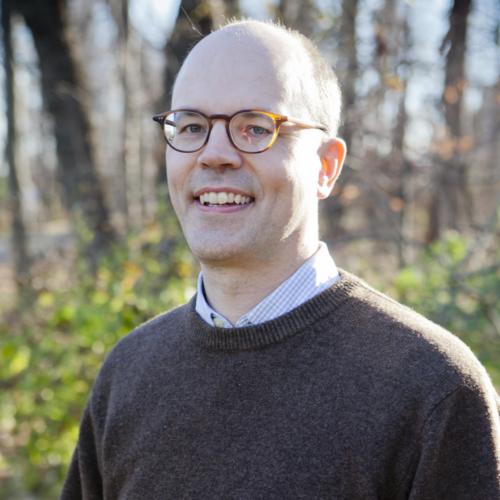 Wolfgang Losert
Physics
Professor & Associate Dean
Granular dynamics and optical biophysics, biophysics research, granular research, microscopy tools
Department page
| Group site
Wolfgang Losert
Physics
Professor & Associate Dean
Granular dynamics and optical biophysics, biophysics research, granular research, microscopy tools
Department page
| Group site
 Dionisios Margetis
Mathematics
Professor
My research spans mathematical methods that describe physical phenomena across time and length scales. These methods aim to link microscopic physics with continuum laws. Topics of active interest include:
Dionisios Margetis
Mathematics
Professor
My research spans mathematical methods that describe physical phenomena across time and length scales. These methods aim to link microscopic physics with continuum laws. Topics of active interest include: Luz Martinez-Miranda
Materials Science and Engineering
Associate Professor
Liquid Crystals for biological studies and general engineering applications (e.g., displays), X-ray scattering techniques of liquid crystal and other materials.
Department page
Luz Martinez-Miranda
Materials Science and Engineering
Associate Professor
Liquid Crystals for biological studies and general engineering applications (e.g., displays), X-ray scattering techniques of liquid crystal and other materials.
Department page
 Isaak Mayergoyz
Electrical and Computer Engineering
Alford L. Ward Professor and Distinguished Scholar-Teacher
Distinguished University Professor
Electrostatic (Plasmon) Resonances in Metallic and Semiconductor Nanoparticles, Spintronics, Nonlinear Magnetization Dynamics in Nanosystems, Analysis of Fluctuations in Ultra Small (Nano) Semiconductor Devices, Mathematical Modelling of Hysteresis, Drive Independent Recovery and Forensics of Hard Disk Data ,Computational Electromagnetics,Power Engineering
Department page
Isaak Mayergoyz
Electrical and Computer Engineering
Alford L. Ward Professor and Distinguished Scholar-Teacher
Distinguished University Professor
Electrostatic (Plasmon) Resonances in Metallic and Semiconductor Nanoparticles, Spintronics, Nonlinear Magnetization Dynamics in Nanosystems, Analysis of Fluctuations in Ultra Small (Nano) Semiconductor Devices, Mathematical Modelling of Hysteresis, Drive Independent Recovery and Forensics of Hard Disk Data ,Computational Electromagnetics,Power Engineering
Department page
 William McDonough
Geology
Professor
Understanding the composition, structure and evolution of the Earth and the other terrestrial planets are dominant themes of my research. The differentiation of the Earth has created 3 separate and distinct reservoirs (i.e., the core, the mantle-crust system, and the atmosphere-hydrosphere system). These reservoirs are in turn themselves internally differentiated and powered in part by radioactively produced energy. Chemical and isotopic studies of terrestrial and meteoritic samples provide insights into the timing and details of the various differentiation processes occurring in these planetary domains.
Department page
| Group site
William McDonough
Geology
Professor
Understanding the composition, structure and evolution of the Earth and the other terrestrial planets are dominant themes of my research. The differentiation of the Earth has created 3 separate and distinct reservoirs (i.e., the core, the mantle-crust system, and the atmosphere-hydrosphere system). These reservoirs are in turn themselves internally differentiated and powered in part by radioactively produced energy. Chemical and isotopic studies of terrestrial and meteoritic samples provide insights into the timing and details of the various differentiation processes occurring in these planetary domains.
Department page
| Group site
 Howard Milchberg
Electrical and Computer Engineering
Professor
Nonlinear optics, laser and optical physics, interaction of intense electromagnetic fields with atoms, solids, and plasmas; generation and application of coherent and incoherent short wavelength radiation.
Department page
| Group site
Howard Milchberg
Electrical and Computer Engineering
Professor
Nonlinear optics, laser and optical physics, interaction of intense electromagnetic fields with atoms, solids, and plasmas; generation and application of coherent and incoherent short wavelength radiation.
Department page
| Group site
 Thomas Murphy
Electrical and Computer Engineering
Professor; Director, Institute for Research in Electronics and Applied Physics
Optical communications, short-pulse phenomena, numerical simulation, optical pulse propagation, nanotechnology and integrated photonics.
Department page
| Group site
Thomas Murphy
Electrical and Computer Engineering
Professor; Director, Institute for Research in Electronics and Applied Physics
Optical communications, short-pulse phenomena, numerical simulation, optical pulse propagation, nanotechnology and integrated photonics.
Department page
| Group site
 Gottlieb Oehrlein
Materials Science and Engineering
Professor
Applications of low-temperature plasma science and technology to materials processing, surface chemistry and physics of thin film growth, etching and modification, plasma-surface and plasma-polymer interactions, in-situ plasma and surface diagnostics, physics and chemistry of ion-induced surface processes and of imaging and templating materials, nanoscale structure and device fabrication and characterization, surface and bulk defects of materials.
Department page
| Group site
Gottlieb Oehrlein
Materials Science and Engineering
Professor
Applications of low-temperature plasma science and technology to materials processing, surface chemistry and physics of thin film growth, etching and modification, plasma-surface and plasma-polymer interactions, in-situ plasma and surface diagnostics, physics and chemistry of ion-induced surface processes and of imaging and templating materials, nanoscale structure and device fabrication and characterization, surface and bulk defects of materials.
Department page
| Group site
 Min Ouyang
Physics
Associate Professor
We are interested in exploring new physics and applications based on the spin degree of freedom of electrons and nuclei within ordered nano-engineered architectures with an emphasis on following areas:
Min Ouyang
Physics
Associate Professor
We are interested in exploring new physics and applications based on the spin degree of freedom of electrons and nuclei within ordered nano-engineered architectures with an emphasis on following areas: Paul Paukstelis
Chemistry and Biochemistry
Associate Professor
Much of our work is geared toward being able to rationally design DNA crystals for nanotechnology applications. We described the first rationally designed 3-D DNA crystals, based on a predictable non-canonical base pairing motif. Subsequently, we have demonstrated that these crystals contain a network of solvent channels into which macromolecules can be absorbed or excluded based on size. Building on this work, we have demonstrated that protein enzymes encapsulated in the DNA crystals are active (Geng & Paukstelis, 2014), making these the first example of DNA-based solid-state biocatalysts. My laboratory is continuing to develop DNA-based technologies at the emerging interface between biology, materials science, and engineering.
Department page
Paul Paukstelis
Chemistry and Biochemistry
Associate Professor
Much of our work is geared toward being able to rationally design DNA crystals for nanotechnology applications. We described the first rationally designed 3-D DNA crystals, based on a predictable non-canonical base pairing motif. Subsequently, we have demonstrated that these crystals contain a network of solvent channels into which macromolecules can be absorbed or excluded based on size. Building on this work, we have demonstrated that protein enzymes encapsulated in the DNA crystals are active (Geng & Paukstelis, 2014), making these the first example of DNA-based solid-state biocatalysts. My laboratory is continuing to develop DNA-based technologies at the emerging interface between biology, materials science, and engineering.
Department page
 Martin Peckerar
Electrical and Computer Engineering
Professor Emeritus
Microelectronics Integrated circuits Microstructure science and technology Analog and mixed signal design
Department page
| Group site
Martin Peckerar
Electrical and Computer Engineering
Professor Emeritus
Microelectronics Integrated circuits Microstructure science and technology Analog and mixed signal design
Department page
| Group site
 Raymond Phaneuf
Materials Science and Engineering
Professor
Ray Phaneuf's research includes experimental studies of directed self-assembly and self-organization, nanoparticle enhanced-spectroscopy, surface faceting transitions, surface phase formation in reactive systems, and the use of surface sensitive electron microcopies in characterizing structures and devices at the nanometer scale.
Department page
| Group site
Raymond Phaneuf
Materials Science and Engineering
Professor
Ray Phaneuf's research includes experimental studies of directed self-assembly and self-organization, nanoparticle enhanced-spectroscopy, surface faceting transitions, surface phase formation in reactive systems, and the use of surface sensitive electron microcopies in characterizing structures and devices at the nanometer scale.
Department page
| Group site
 Philip Piccoli
Geology
AIM Lab Staff
Electron microprobe; Field studies of silicic igneous rocks; role of accessory phases in granitic systems; microanalysis of rock-forming minerals; geochemistry of fluids associated with plutonic and volcanic systems
Department page
| Group site
Philip Piccoli
Geology
AIM Lab Staff
Electron microprobe; Field studies of silicic igneous rocks; role of accessory phases in granitic systems; microanalysis of rock-forming minerals; geochemistry of fluids associated with plutonic and volcanic systems
Department page
| Group site
 Oded Rabin
Materials Science and Engineering
Associate Professor
Synthesis and physical properties of nanowires and porous thin films, electrical and thermal transport in low dimensional systems, nanoporous membranes, interfacial nanoscience (including organic-inorganic systems, Ccntrolled assembly, scattering, and surface plasmons), thermal and electrical transport, applications in sensing, microfluidics, and chromatography.
Department page
| Group site
Oded Rabin
Materials Science and Engineering
Associate Professor
Synthesis and physical properties of nanowires and porous thin films, electrical and thermal transport in low dimensional systems, nanoporous membranes, interfacial nanoscience (including organic-inorganic systems, Ccntrolled assembly, scattering, and surface plasmons), thermal and electrical transport, applications in sensing, microfluidics, and chromatography.
Department page
| Group site
 Srinivasa Raghavan
Chemical and Biomolecular Engineering
Professor
Self-assembled systems, containers for drug delivery, "smart" fluids, polymer and colloidal gels, polymer-CNT nanocomposites, scattering techniques/rheology.
Department page
| Group site
Srinivasa Raghavan
Chemical and Biomolecular Engineering
Professor
Self-assembled systems, containers for drug delivery, "smart" fluids, polymer and colloidal gels, polymer-CNT nanocomposites, scattering techniques/rheology.
Department page
| Group site
 Janice Reutt-Robey
Chemistry and Biochemistry
Professor & Chair, Chemistry
Our research centers on the formation of chemical interfaces and nanostructures with targeted electronic and chemical properties for application in energy production and storage and nanotechnology. Fundamentally, we are interested in configuring atomic and molecular arrangements in films and supported nanostructures to impact dynamical processes - such as diffusion, charge-transfer and chemical binding. New electronic device concepts, based upon low-dimensional material interfaces, are investigated. Our main experimental tools are ultrahigh vacuum (UHV) scanned probe microscopies and surface spectroscopies, developed in combination with novel deposition methods.
Department page
| Group site
Janice Reutt-Robey
Chemistry and Biochemistry
Professor & Chair, Chemistry
Our research centers on the formation of chemical interfaces and nanostructures with targeted electronic and chemical properties for application in energy production and storage and nanotechnology. Fundamentally, we are interested in configuring atomic and molecular arrangements in films and supported nanostructures to impact dynamical processes - such as diffusion, charge-transfer and chemical binding. New electronic device concepts, based upon low-dimensional material interfaces, are investigated. Our main experimental tools are ultrahigh vacuum (UHV) scanned probe microscopies and surface spectroscopies, developed in combination with novel deposition methods.
Department page
| Group site
 Efrain Rodriguez
Chemistry and Biochemistry
Associate Professor & DIrector of Chemistry Graduate Program
Materials and solid state chemistry. Inorganic materials. Synthesis and characterization of transition metal compounds including oxides, chalcogenides and pnictides. Preparation of metastable materials for energy applications via chemie douce, or soft chemical, methods. Functional inorganci compounds with properties such as magnetic, electronic, and mixed conductivity (ionic and electrical). Advanced characterization of compounds including X-ray and neutron diffraction coupled with magnetization and electrical transport measurements.
Department page
| Group site
Efrain Rodriguez
Chemistry and Biochemistry
Associate Professor & DIrector of Chemistry Graduate Program
Materials and solid state chemistry. Inorganic materials. Synthesis and characterization of transition metal compounds including oxides, chalcogenides and pnictides. Preparation of metastable materials for energy applications via chemie douce, or soft chemical, methods. Functional inorganci compounds with properties such as magnetic, electronic, and mixed conductivity (ionic and electrical). Advanced characterization of compounds including X-ray and neutron diffraction coupled with magnetization and electrical transport measurements.
Department page
| Group site
 Gary Rubloff
Materials Science and Engineering
Distinguished University Professor; Minta Martin Professor of Engineering; Director, Nanostructures for Electrical Energy Storage
Multifunctional nanostructures for energy storage and capture, atomic layer deposition (ALD) process, mechanisms, and technology, nanoscale devices for quantum computing.
Department page
| Group site
Gary Rubloff
Materials Science and Engineering
Distinguished University Professor; Minta Martin Professor of Engineering; Director, Nanostructures for Electrical Energy Storage
Multifunctional nanostructures for energy storage and capture, atomic layer deposition (ALD) process, mechanisms, and technology, nanoscale devices for quantum computing.
Department page
| Group site
 Lourdes Salamanca-Riba
Materials Science and Engineering
Professor
Nanocomposites of ferroelectric-/-magnetic oxides, solid oxide fuel cells (SOFC), metals containing nano-carbon structures called Covetics; 4H SiC based MOSFETS for high temperature, high power applications, transmission electron microscopy of semiconductor nanowires, optical properties of materials, hybrid phtovoltaic nanocompostites.
Department page
Lourdes Salamanca-Riba
Materials Science and Engineering
Professor
Nanocomposites of ferroelectric-/-magnetic oxides, solid oxide fuel cells (SOFC), metals containing nano-carbon structures called Covetics; 4H SiC based MOSFETS for high temperature, high power applications, transmission electron microscopy of semiconductor nanowires, optical properties of materials, hybrid phtovoltaic nanocompostites.
Department page
 Benjamin Shapiro
Fischell Dept. of Bioengineering
Professor
My group is focused on all aspects of micro-system control, from initial determination of the dominant physics, to model development, control problem statement and algorithm design, to experimental verification.
Department page
| Group site
Benjamin Shapiro
Fischell Dept. of Bioengineering
Professor
My group is focused on all aspects of micro-system control, from initial determination of the dominant physics, to model development, control problem statement and algorithm design, to experimental verification.
Department page
| Group site
 Larry Sita
Chemistry and Biochemistry
Professor
Transition and Main Group Metal Inorganic and Organometallic
Chemistry, New Synthetic Methodology, Catalyst Development, Polymers, Chemically-Tailored Surfaces and Interfaces, Molecular and Mesoscopic Self-Assembly, New Nanofabrication Processes
Department page
| Group site
Larry Sita
Chemistry and Biochemistry
Professor
Transition and Main Group Metal Inorganic and Organometallic
Chemistry, New Synthetic Methodology, Catalyst Development, Polymers, Chemically-Tailored Surfaces and Interfaces, Molecular and Mesoscopic Self-Assembly, New Nanofabrication Processes
Department page
| Group site
 Elisabeth Smela
Mechanical Engineering
Professor
Dr. Smela's research is primarily in the field of microelectromechanical systems (MEMS), particularly polymer MEMS and bioMEMS. She focuses on the use of organic materials (from polymers to cells) in microsystems to realize microactuators, cell-based sensors, and CMOS/MEMS integrated systems.
Department page
| Group site
Elisabeth Smela
Mechanical Engineering
Professor
Dr. Smela's research is primarily in the field of microelectromechanical systems (MEMS), particularly polymer MEMS and bioMEMS. She focuses on the use of organic materials (from polymers to cells) in microsystems to realize microactuators, cell-based sensors, and CMOS/MEMS integrated systems.
Department page
| Group site
 Sergei Sukharev
Biology
Professor
Dr. Sukharev investigates the principles and the molecules that cells use to detect mechanical force and pressure. Mechanosensation encompasses many phenomena from the relatively simple such as bacterial adaptation to osmotic changes in the medium to the very complex such as hearing and balance in animals, or gravitropism in plants; yet many primary receptors responsible for force detection remain unidentified as molecular entities. Mechanosensitive channels that conduct ions across the plasma membrane in response to membrane tension are thought to be primary transducers that convert mechanical stimuli into the form of cellular signals. Dr. Sukharev has made the major effort in isolation and cloning of the Mechanosensitive Channel of Large conductance of Escherichia coli (MscL), the first identified channel of this class. When the closed-state crystal structure of a MscL homolog became available, Dr. Sukharev focused his research on prediction of MscL structure in the open state. His current study addresses the nature of interactions inside the MscL protein that keep the channel firmly closed at rest, but allow it to open under tension of a certain magnitude. The group is also approaching the mechanism of gating of the small bacterial Mechanosensitive Channel, MscS. These interdisciplinary projects involve molecular modeling and simulations, genetic modifications of the channel genes, disulfide cross-linking, biochemical purification of proteins and reconstitution into phospholipid membranes; single-channel recording and video imaging of patch-clamped membranes; kinetic and thermodynamic analysis of the channel behavior.
Department page
| Group site
Sergei Sukharev
Biology
Professor
Dr. Sukharev investigates the principles and the molecules that cells use to detect mechanical force and pressure. Mechanosensation encompasses many phenomena from the relatively simple such as bacterial adaptation to osmotic changes in the medium to the very complex such as hearing and balance in animals, or gravitropism in plants; yet many primary receptors responsible for force detection remain unidentified as molecular entities. Mechanosensitive channels that conduct ions across the plasma membrane in response to membrane tension are thought to be primary transducers that convert mechanical stimuli into the form of cellular signals. Dr. Sukharev has made the major effort in isolation and cloning of the Mechanosensitive Channel of Large conductance of Escherichia coli (MscL), the first identified channel of this class. When the closed-state crystal structure of a MscL homolog became available, Dr. Sukharev focused his research on prediction of MscL structure in the open state. His current study addresses the nature of interactions inside the MscL protein that keep the channel firmly closed at rest, but allow it to open under tension of a certain magnitude. The group is also approaching the mechanism of gating of the small bacterial Mechanosensitive Channel, MscS. These interdisciplinary projects involve molecular modeling and simulations, genetic modifications of the channel genes, disulfide cross-linking, biochemical purification of proteins and reconstitution into phospholipid membranes; single-channel recording and video imaging of patch-clamped membranes; kinetic and thermodynamic analysis of the channel behavior.
Department page
| Group site
 Peter Sunderland
Fire Protection Engineering
Professor; Director, Undergraduate Studies
Combustion and fire safety, including soot formation and oxidation, microgravity combustion, refrigerant flammability, hydrogen flames, laminar diffusion flames, sodium fires, battery fires, vehicle fires, and diagnostics development.
Department page
Peter Sunderland
Fire Protection Engineering
Professor; Director, Undergraduate Studies
Combustion and fire safety, including soot formation and oxidation, microgravity combustion, refrigerant flammability, hydrogen flames, laminar diffusion flames, sodium fires, battery fires, vehicle fires, and diagnostics development.
Department page
 Ichiro Takeuchi
Materials Science and Engineering
Professor; Director, Graduate Program
Applications of combinatorial synthesis and characterization methodology to electronic, magnetic and smart materials; fabrication and characterization of novel multilayer thin-film devices; variable temperature scanning probe microscopes.
Department page
Ichiro Takeuchi
Materials Science and Engineering
Professor; Director, Graduate Program
Applications of combinatorial synthesis and characterization methodology to electronic, magnetic and smart materials; fabrication and characterization of novel multilayer thin-film devices; variable temperature scanning probe microscopes.
Department page
 Alba Torrents
Civil and Environmental Engineering
Professor
Fate and transport of organic pollutants in the environment
Alba Torrents
Civil and Environmental Engineering
Professor
Fate and transport of organic pollutants in the environment Arpita Upadhyaya
Institute for Physical Science and Technology
Associate Professor
The theme of my research is to understand various aspects of biological motion - its physical basis and its biochemical control. Motion is one of the most defining attributes of living things and involves a series of mechanical transduction processes between the release of chemical energy and actual movement. Nature has engineered many molecular and cellular machines that induce motion at different scales - from the level of a single molecule to that of multicellular tissues.
Department page
| Group site
Arpita Upadhyaya
Institute for Physical Science and Technology
Associate Professor
The theme of my research is to understand various aspects of biological motion - its physical basis and its biochemical control. Motion is one of the most defining attributes of living things and involves a series of mechanical transduction processes between the release of chemical energy and actual movement. Nature has engineered many molecular and cellular machines that induce motion at different scales - from the level of a single molecule to that of multicellular tissues.
Department page
| Group site
 Eric Wachsman
Materials Science and Engineering
Director, University of Maryland Energy Research Center (UMERC), William L. Crentz Centennial Chair in Energy Research
Solid state batteries
Eric Wachsman
Materials Science and Engineering
Director, University of Maryland Energy Research Center (UMERC), William L. Crentz Centennial Chair in Energy Research
Solid state batteries Edo Waks
Electrical and Computer Engineering
Professor
Application of photonic crystals to quantum information processing
Edo Waks
Electrical and Computer Engineering
Professor
Application of photonic crystals to quantum information processing Chunsheng Wang
Chemical and Biomolecular Engineering
Professor; R.F. and F.R. Wright Distinguished Chair
Rechargeable batteries, Applied electrochemistry, Fuel cells, electroanalytical technologies, Nanostructured materials, Electrochemical gas separation and compression
Department page
| Group site
Chunsheng Wang
Chemical and Biomolecular Engineering
Professor; R.F. and F.R. Wright Distinguished Chair
Rechargeable batteries, Applied electrochemistry, Fuel cells, electroanalytical technologies, Nanostructured materials, Electrochemical gas separation and compression
Department page
| Group site
 Nam Sun Wang
Chemical and Biomolecular Engineering
Professor
Microbial Fermentation, Insect/mammalian Cell Culture, Tissue Culture, Bioseparation, Modeling, Protein/Enzyme Immobilization, Drug Delivery, Angiogenesis, NIR, Fluorescence, Light Scattering, Protein Array, Antibody-Antigen Interaction, DNA-DNA hybridiza
Department page
| Group site
Nam Sun Wang
Chemical and Biomolecular Engineering
Professor
Microbial Fermentation, Insect/mammalian Cell Culture, Tissue Culture, Bioseparation, Modeling, Protein/Enzyme Immobilization, Drug Delivery, Angiogenesis, NIR, Fluorescence, Light Scattering, Protein Array, Antibody-Antigen Interaction, DNA-DNA hybridiza
Department page
| Group site
 YuHuang Wang
Chemistry and Biochemistry
Professor
Quantum defects, Tube^2, materials and physical chemistry of nanocarbon, collective properties of super nanostructures, nanofabrication, energy science, biomedical technology.
Department page
| Group site
YuHuang Wang
Chemistry and Biochemistry
Professor
Quantum defects, Tube^2, materials and physical chemistry of nanocarbon, collective properties of super nanostructures, nanofabrication, energy science, biomedical technology.
Department page
| Group site
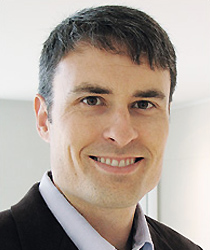 Ian White
Fischell Dept. of Bioengineering
Associate Professor
Disease detection, optical biosensors, ring resonators, SERS, lab-on-a-chip.
Department page
| Group site
Ian White
Fischell Dept. of Bioengineering
Associate Professor
Disease detection, optical biosensors, ring resonators, SERS, lab-on-a-chip.
Department page
| Group site
 Manfred Wuttig
Materials Science and Engineering
Professor
Phase transformations, self-organized materials, magnetoelectrics, nanomagnetism.
Department page
Manfred Wuttig
Materials Science and Engineering
Professor
Phase transformations, self-organized materials, magnetoelectrics, nanomagnetism.
Department page
 Bao Yang
Mechanical Engineering
Professor
Micro/nanoscale thermal transport and energy conversion Thermal science and its applications in electrical engineering, optical engineering, and material science Micro/nano devices MEMS Nanotechnology
Department page
Bao Yang
Mechanical Engineering
Professor
Micro/nanoscale thermal transport and energy conversion Thermal science and its applications in electrical engineering, optical engineering, and material science Micro/nano devices MEMS Nanotechnology
Department page
 Miao Yu
Mechanical Engineering
Professor
Optical sensors Sensor mechanics and material behavior at multiple spatial scales Micro-scale and nano-scale sensor systems Sensors for civil, mechanical, electrical, biochemical, biomechanics, biology, medical, and environmental applications, and sensor networks Adaptive optics Wavefront sensing and control Imaging through turbulence Smart materials and structures Theoretical and experimental mechanics
Department page
Miao Yu
Mechanical Engineering
Professor
Optical sensors Sensor mechanics and material behavior at multiple spatial scales Micro-scale and nano-scale sensor systems Sensors for civil, mechanical, electrical, biochemical, biomechanics, biology, medical, and environmental applications, and sensor networks Adaptive optics Wavefront sensing and control Imaging through turbulence Smart materials and structures Theoretical and experimental mechanics
Department page
 Chen Zhang
Chemical and Biomolecular Engineering
Assistant Professor
Membrane science, transport in nanoporous materials, advanced hollow fibers, and sustainable separation processes.
Department page
| Group site
Chen Zhang
Chemical and Biomolecular Engineering
Assistant Professor
Membrane science, transport in nanoporous materials, advanced hollow fibers, and sustainable separation processes.
Department page
| Group site